#anti doug gardner
Explore tagged Tumblr posts
Text
I hate Elsa
#atypical#lb#1x07#tw: spoilers#anti elsa gardner#at least she has the decency to break it off#but ughhhhh#Doug deserves better
2 notes
·
View notes
Text
the fact that i used to hate elsa gardener so much and now (after watching season 4) i like her more than doug. she really grew as a character, for me, but not in the sense that she changed completely, which i like. she's still invasive and can overstep sometimes, but she's more involved with casey and doug, and she's stepped back a lot with sam (though not completely). she's just a lot more likeable in season 4.
doug, however, started to overstep, and interfere where he shouldn't have, and hid the fact that megan had kissed him from his wife (who, yeah, had actively cheated, and i still don't really like her character in seasons 1+2, but she did keep trying really hard to fix things and, while i don't condone cheating, i like that she actively tried harder in her relationship to fix it) and told her at a pretty bad time. not to mention, how was about izzie when he found out that she and casey were dating. and that One Scene where he confronts izzie and is kind of mean to those girl (to her face, too). this has also been a recurring problem for me with doug, because he also actively mean to evan at first as well, and still wasn't even particularly nice to him this season, either (i am a firm believer that evan desereved way better in this show). anyway, in that One Scene, he overstepped majorly in casey's relationship, even causing izzie to break up with casey, and there wasn't even a scen where he apologises to izzie for what he said (i can't remember if he apologised to evan, either).
overall, it's like elsa and doug just switched likability this season. and, while elsa actually had quite a lot of growth, doug didn't really seem to have any.
#elsa gardner#doug gardner#casey gardner#(sort of)#izzie taylor#(also sort of)#sam gardner#(just barely)#anti doug gardner#(i guess?)#atypical
101 notes
·
View notes
Text
Think on it and thinking on It and thinking on it...
At the time of the break up they were literally the best thing in each other's lives:
Casey was struggling with her identity, struggling with staying a float between track and the endless clayton prep work load. She literally couldn't do the one thing that made her happy without feeling overwhelmed and miserable by it, run.
But she had Izzie. Izzie was the one constant she had, even if it came with the "am I good enough for Izzie if I don't have myself figured out, but yes Izzie was the thing, the person, that Casey felt like would always be there, even with all these other things falling apart.
And Casey tries to make sure that Izzie knows that even if they're apart they never truly apart. Different schools or same school they're still girlfriend's, because casey needs Izzie to know this, she isn't saying it blatantly, but Izzie is her constant. Her happiness. The thing that's always clear to her.
For Izzie she literally just got kicked out, thrown out of her own home literally four just being who she is.
And when she hears about Casey wanting to go back to Newton that probably hits like a truck. Because Casey is her happiness, her constant, too. Of course she's scared, nervous, and wary.
The moment in Casey's Bedroom after the track meet incident and now this?
She goes to Doug thinking he'd help her, and not even her though she just wants him to help Casey. But no....
Like omfg can you imagine??? Ahahah fuck Doug, like honestly.
Can you imagine being Izzie, seeing the person you love most, the person who makes her genuinely so happy and being told you're doing the opposite for them...
41 notes
·
View notes
Text
Why the hell are the Atypical writers trying to make Elsa and Doug a thing?
I rhink I speak for all of us when I say we want Doug and Megan, not Doug and Elsa
11 notes
·
View notes
Text
#S#http://www.salem-news.com/articles/january112014/corruption-petition-ns.php?fbclid=IwAR0n668Efngx8J3l95dUI5tufiMmD73OQWgy2oCp2eovOjeokwQRFW2#https://jameszogby.com/washingtonwatch2021s/anti-semitism-amp-anti-arab-bigotry-part-i?emci=4f103383-1fee-eb11-a7ad-501ac57b8fa7&emdi=4b99f#https://youtu.be/_-0J49_9lwc#https://www.wweek.com/portland/article-21195-reputation-for-rent.html#https://www.wweek.com/portland/blog-30283-u-of-o-prof-files-bar-complaint-in-long-v-kroger-case.html#https://www.dailyemerald.com/archives/uo-president-faces-ethics-complaints/article_de9248c1-bf32-53ea-9a2b-8b67c4c08ad1.html#https://www.thefreelibrary.com/University+president+faces+ethics+complaint.-a0153374882?fbclid=IwAR1lSXHpNvxvFW0TxkLDBhjELusnbonQkvyk8I3L7O#Late Oregon A.G. Dave Frohnmayer and Both D.A. Doug Harcleroad#Alex Gardner with the Lane County Sheriff#trapped me in a criminal record since 1987. They have changed first letter in my first name to So I couldn't expunged it!!#http://petitions.moveon.org/sign/justice-for-nadia-sindi…#My life with Liberal Klans in Oregon!!#Arab/Muslim Americans are treated less than animals! We are called Sand N…#We are being prosecuted in a daily basis! High tech lynching#institutionally racism! Especially for Arab women!!#Oregon late A.G. Dave Frohnmayer had my SS#blocked & prevented me from getting employed#made me homeless and jobless!#Dave Frohnmayer was the one who started & initiated the fraud of Foreclosed-houses & taking over our homes!#His bank robber Rep.Bob Ackerman#Doug McCool#UO Prof. Margaret Hallock. Hired Scarlet Lee/Barnhart Associates. Forged my family’s signature. Gave our fully paid Condo to the thief Brok#his mom Karen Ogle was working in the USA Consulate in Jeddah#Saudi Arabia. She administered the power of attorney to have my sister signature#added her son to the deed. Sold without my signature!#Bob Ackerman had never responded to the Summon from the Court#and the sheriff never served me or arrested him either!!#ThIs is what kind of criminal government we have in Oregon!!#Arrest Rep. Bob Ackerman
0 notes
Audio
Content warnings: police violence, racial violence, victims of hate crimes, white supremacy, and police violence.
Read by: Shariba Rivers, Pat King, Alexander Danner, Ryan Schile, Bilal Dardai, Duo Yang, Eli McIlveen, Amelia Bethel, Joshua K. Harris, Michael Turrentine, Kathleen Hoil, Marsha Harman, Ele Matelan, Jeffrey Nils Gardner, and Eleanor Hyde.
Transcript below the cut.
Today is Wednesday, June 10, 2020. There will not be a new episode of Unwell today. Following the example and the words of Black Lives Matter Chicago, we call for an end to the state violence against and criminalization of Black communities through police forces, an unjust legal system, and federal, state, and local political organizations.
As the artists of HartLife NFP, we call on our fellow art makers in positions of institutional power and privilege to take concrete actions to make your institutions and artistic work explicitly and actively anti-racist.
We affirm our commitment to do the same here. We will interrogate ourselves when we have fallen short of this goal and recommit to do better every time.
The United States is a country founded on land stolen from indigenous peoples, built with the stolen labor and lives of enslaved Black people. We call especially on White listeners to reckon with this fact, today and every day.
The following list is both incomplete and horrifyingly long. These people were victims of hate crimes, police officers and of an unjust, white supremacist system.
We say their names and we remember their lives. Tamir Rice Samuel Dubose Walter Scott Jordan Davis Tony McDade Dion Johnson Dante Parker Michelle Cusseax Laquan McDonald Richard Perkins Nathaniel Harris Pickett Benni Lee Tignor Miguel Espinal Michael Noel Kevin Mathews Bettie Jones Quintonio Legrier Keith Childress Jr Janet Wilson Randy Nelson Antronie Scott George Mann John Crawford III Ezell Ford Aaron Bailey Ronell Foster Stephon Clark Antwon Rose II Tanisha Anderson Alton Sterling Philando Castile Botham Jean Pamela Turner Akai Gurley Rumain Brisbon Trayvon Martin Jerame Reid Mathew Ajibade Frank Smart Alexia Christian Brendon Glenn Victor Manuel Larosa Jonathan Sanders Freddie Blue Joseph Mann Salvado Ellswood Albert Joseph Davis Darrius Steward Billy Ray Davis Michael Sabbie Brian Keith Day Christian Taylor Troy Robinson Natahsa McKenna Tony Robinson Anthony Hill Mya Hall Phillip White Eric Harris Walter Scott William Chapman II Asshams Pharoah Manley Felix Kumi Keith Harrison McLeod Junior Prosper LaMontez Jones Patterson Brown Dominic Hutchinson Anthony Ashford Alonzo Smith Tyree Crawford India Kager La’Vante Biggs Michael Lee Marshall Jamar Clark Wendell Celestine David Joseph Calin Roquemore Dyzhawn Perkins Christopher Davis Marco Loud Peter Gaines Torrey Robinson Darius Robinson Kevin Hicks Mary Truxillo Demarcus Semer Willie Tillman Terrill Thomas Sylville Smith Michael Brown Eric Garner Sandra Bland Fredie Gray Terrence Crutcher Paul O’Neal Alteria Woods Jordan Edwards Dominique Clayton Christopher Whitfield Christopher McCorvey Eric Reason Michael Lorenzo Dean Breonna Taylor Atatiana Jefferson Ahmaud Arbery Doug Lewis George Floyd Manuel Ellis Maurice Gordon
Black Lives Matter.
15 notes
·
View notes
Link
via Politics – FiveThirtyEight
On Tuesday, House Speaker Nancy Pelosi and House Democrats announced two articles of impeachment against President Trump: abuse of power and obstruction of Congress. Soon, the U.S. House will almost certainly vote to pass those two articles. And then things move to the U.S. Senate, where things seem just as inevitable: The GOP-led Senate will block Trump’s removal.
But it’s worth explaining exactly why we think the Senate won’t vote to remove Trump. So let’s break down the vote among all 100 senators — we expect a mostly party-line vote, but there are actually a number of different incentives at work beneath the surface. (Remember that a two-thirds majority — at least 67 votes — is needed to remove Trump.)
Let’s start with the Democrats.
Almost certain to vote for removal: 44 Democrats
Trump’s removal is supported by a plurality of Americans (48 percent) and more than 80 percent of Democrats. So if you’re the typical Democratic senator, who represents a blue-leaning state, the safe and obvious vote is for Trump’s removal. And that’s without even considering the strong evidence that Trump pressured Ukraine to investigate the Bidens in exchange for a White House meeting and military aid.
It’s hard for me to see even Democrats who like to emphasize their bipartisanship — Chris Coons of Delaware, for example — or those up for reelection in 2020 in blue-tinged swing states — Gary Peters of Michigan, Tina Smith of Minnesota — voting against impeachment. Impeachment is popular enough among Democratic voters that any Democratic senator in a state that’s not solidly red would have serious electoral problems voting against it.
Swing votes based on centrism: 2 Democrats
There are two Democrats, Joe Manchin of West Virginia and Kyrsten Sinema of Arizona, who are not up for re-election in 2020 but who might still vote against removal.
Sinema, who was elected last November, is known to be fairly centrist and comfortable bucking her party. She was one of only three Democrats who backed the confirmation of William Barr to be attorney general, for example. Manchin is friendly with Trump and voted for Barr and Supreme Court Justice Brett Kavanaugh. The West Virginian has taken the same position as the Trump White House on key votes about 31 percent of the time in the current Congress, making him the chamber’s most Trump-aligned Democrat. Sinema is No. 2, backing the president’s position 21 percent of the time.
In terms of partisan lean,1 Arizona leans red, and West Virginia is super conservative. But I doubt electoral considerations matter that much to either Manchin nor Sinema — they aren’t up for reelection until 2024, when Trump’s impeachment will likely be a distant memory.
So I would bet that both Manchin and Sinema vote against Trump’s removal, preserving their brands as separate from the broader Democratic Party.
Swing vote based on electoral considerations: 1 Democrat
Like Manchin and Sinema, Doug Jones of Alabama also voted for Barr. Unlike Manchin and Sinema, Jones is up for re-election in 2020. My read on Jones is that he’s not that personally centrist; instead, he seems to be trying to figure out how to stay in his seat in pro-Trump Alabama. Jones has taken Trump’s position on 18 percent of Senate votes in the current Congress, making him the third-most Trump-aligned Democrat, after Manchin and Sinema. But relative to Alabama’s politics, Jones ranks behind only Jon Tester of Montana in bucking his state’s pro-Trump preferences.
My starting assumption is that Jones will vote against Trump’s removal, hoping that the vote helps his re-election bid. But he could also decide that Trump’s behavior is too extreme to condone and back removal — electoral consequences be damned. Or perhaps Jones votes for Trump’s removal both because he opposes the president’s conduct but also because the Alabama Democrat sees little chance of winning reelection anyway and is basically auditioning for a spot in the next Democratic president’s cabinet. (In 2016, presidential and U.S. Senate voting were highly correlated — no U.S. Senate candidate won in a state where his or her party’s presidential nominee lost. It’s hard to imagine the Democratic presidential nominee winning in Alabama in 2020, so Jones seems like an underdog.)
So that’s at least 44 votes for removal just among Democrats, and as many as 47. The removal of Trump would need another 20-23 votes. Those would have to come from among the chamber’s 53 Republicans, which means removal is 20 to 23 votes short.
At least right now, I don’t think any Republican is likely to vote for Trump’s removal. My guess is that lots of Republicans privately disapprove of Trump’s Ukraine moves. But GOP senators face significant pressure not to publically break with Trump if they want to maintain their standing within the party and not annoy GOP voters who they need to win primaries and general elections.
Still, there are some gradations among the likely no’s. Let’s go through the GOP blocs, from the most likely to the least likely to vote for Trump’s removal.
Trump-skeptical, limited electoral considerations: 2 Republicans
Lisa Murkowski of Alaska and Mitt Romney of Utah are among the most Trump-skeptical Republicans in Congress, with the Utah senator, in particular, occasionally bashing the president very sharply. Neither has too much to worry about electorally — Murkowski isn’t up for re-election until 2022, and Romney not until 2024. Trump isn’t super popular in Utah, and the state’s Republicans knew they were supporting someone who was not particularly pro-Trump when they nominated Romney in 2018. Murkowski lost a GOP primary in 2010 and then won the general election as a write-in candidate, so she probably isn’t that afraid of breaking with the party, either.
That said, only 8 percent of Republican voters support impeachment. Chiding some of Trump’s more outlandish comments is one thing; supporting the removal of a president with such strong support within your party is something else.
Trump-skeptical, significant electoral considerations: 2 Republicans
Cory Gardner of Colorado and Susan Collins of Maine are both up for reelection in 2020 in Democratic-leaning states. Both have a history of breaking with Trump. They were part of a group of Republicans who publicly said they would not vote for Trump in the run-up to the 2016 election, for example. And Collins, in particular, has remained fairly critical of the president since he came into office. So there are some reasons to think that both could support the president’s removal.
That said, there was some evidence that Republican congressional candidates who broke with Trump in 2016 did worse than those who remained supportive of him, in part because those candidates lost some support from Trump-aligned voters. Perhaps Collins and Gardner would gain support from more centrist, Romney-Clinton voters if they backed Trump’s removal, making up for any losses among conservatives. But that’s a risky bet. Both need Republican voters in the general election.
Also, voting for removal has the potential to result in an organized campaign to defeat Collins or Gardner in their respective GOP primaries. The deadlines to file for the Senate in Colorado and Maine are in mid-March. That’s not a ton of time for a challenger to ramp up a campaign, since the Senate is likely to vote on impeachment sometime in January. But I think it would be fairly easy for even an obscure Republican to find support among GOP activists and donors if he or she were running against a GOP incumbent who had voted for Trump’s removal. And in Maine, there is a very prominent, pro-Trump Republican maywho I think would challenge Collins the moment she voted for Trump’s removal, ex-Gov. Paul LePage.
In short, for Collins and Gardner, the safest electoral route is to oppose removal.
Trump-skeptical, huge electoral considerations: 1 Republican
Ben Sasse of Nebraska was among Trump’s most vocal GOP critics during the president’s first two years in office. But as Sasse’s 2020 re-election bid has neared, the Nebraska senator has changed course — not quite embracing Trump but not going out of his way to emphasize their disagreements either. Not coincidentally, Sasse already has a primary challenger arguing that he is too anti-Trump.
If Sasse voted to remove Trump, I think he would be defeated in Nebraska’s May 12 primary. So I don’t think his vote is in much in question.
Pro-Trump, retiring (no electoral pressure): 4 Republicans
This group includes Lamar Alexander of Tennessee, Richard Burr of North Carolina, Mike Enzi of Wyoming, Pat Roberts of Kansas.2
If Trump was truly in danger of being removed, you’d expect to see the first signs of it in this group. I think Alexander, in particular, would be a part of any such movement. He’s conservative on policy, but more of an old-school-style Republican (think Bob Dole) in terms of temperament. He’s not particularly close to the president.
Similarly, Burr, Enzi and Roberts have no particular loyalty to Trump and no political reason to be wary of supporting his removal. That said, all four are long-time, loyal party members. It’s just really hard to see them breaking with the party’s president on this kind of vote.
Pro-Trump, with significant electoral considerations: 4 Republicans
This group of Republicans — John Cornyn of Texas, Joni Ernst of Iowa, Martha McSally of Arizona, Thom Tillis of North Carolina — has a lot in common with the previous group (neither particularly anti-Trump nor especially pro-Trump), except they’re all up for reelection in 2020 in relatively swingy states. In other words, this is a bit of a complicated vote for them.
The safest course — and the one I would expect all four to take — is to oppose Trump’s removal, therefore preventing a major primary challenge and ensuring Republican voters in their states are strongly behind them for the 2020 general election. That said, for all four, voting against Trump’s removal ties their political prospects even closer to the president’s. If 2020 is an anti-Trump wave year, I think it’s possible that Democrats win Senate seats in Arizona, Iowa, North Carolina and/or Texas — the same Senate-presidential vote alignment that is likely to doom Jones in Alabama would also doom some of these members.
But let’s pause here for a moment. Imagine that everyone in the groups listed so far voted for impeachment. (Again, I don’t think that’s at all likely, but let’s just pretend.) That would still give removal “just” 60 votes — seven short of the required number. That makes this next group of Republicans essentially the deciders in the impeachment process.
Pro-Trump but looking at the polls: 32 Republicans
This is a big group; I’d include: John Barrasso of Wyoming, Roy Blunt of Missouri, John Boozman of Arkansas, Shelley Moore Capito of West Virginia, Bill Cassidy of Louisiana, Mike Crapo of Idaho, Ted Cruz of Texas, Steve Daines of Montana, Deb Fischer of Nebraska, Lindsey Graham of South Carolina, Chuck Grassley of Iowa, John Kennedy of Louisiana, Jim Inhofe of Oklahoma, Josh Hawley of Missouri, John Hoeven of North Dakota, Ron Johnson of Wisconsin, James Lankford of Oklahoma, Mitch McConnell of Kentucky, Mike Lee of Utah, Jerry Moran of Kansas, Rand Paul of Kentucky, Rob Portman of Ohio, Jim Risch of Idaho, Marco Rubio of Florida, Mike Rounds of South Dakota, Dan Sullivan of Alaska, Tim Scott of South Carolina, Richard Shelby of Alabama, Pat Toomey of Pennsylvania, John Thune of South Dakota, Todd Young of Indiana, Roger Wicker of Mississippi.
And at first glance, you not might think these members should be in the same group. After all, Graham has been one of Trump’s strongest defenders amid the Ukraine scandal, while some of these senators — Lee and Paul in particular — have fairly low Trump scores and occasionally break with the president on policy. But what ties all these senators together is that they are generally Republicans who rose to power pre-Trump. That means they are probably more interested in preserving the GOP and their own electoral standing than defending Trump himself. And none of them are up for reelection in 2020 in swing states, so they are probably looking more at the broader landscape for Republicans than their own reelection prospects.
I don’t see them breaking with Trump unless it’s very politically expedient. Let’s say, at some point, 75 percent of Americans support Trump’s removal, including 35 or 40 percent of Republicans. This is the bloc of Republicans that I think would go to the White House and urge Trump to step down. They would be the most potent messengers in such a situation — they rarely attack Trump and so can’t be written off as “Never-Trumpers,” as the president’s allies have cast Romney. More importantly, if this group broke with Trump, there would be the numbers to actually remove him from office. (Again, though, that all seems very unlikely right now.)
Always Trumpers: 8 Republicans
These Republicans — Marsha Blackburn of Tennessee, Mike Braun of Indiana, Tom Cotton of Arkansas, Kevin Cramer of North Dakota, Cindy Hyde-Smith of Mississippi, Kelly Loeffler and David Perdue of Georgia3 and Rick Scott of Florida — either rose to power post-Trump or are closely allied with the president on immigration issues in particular (Cotton and Perdue). I don’t think they will ever, ever break with the president. If Trump’s political standing worsens, Loeffler and Perdue would be making a somewhat risky move in sticking by him because they represent swingy Georgia (and both are on the ballot in 2020), but I still don’t see any circumstances in which they break with the president. Or, put slightly more cautiously, this group of Republicans would be Trump’s last defenders.
There are a lot of competing incentives at work in the Senate regarding impeachment. The way it all shakes out, however, is that the removal vote is at about 56-44 in Trump’s favor. That could, of course, change based on additional evidence emerging, public opinion shifting and Republican senators changing their minds. But right now, it’s just hard to see the Senate trial of Trump taking place with any real chance that 67 senators will support removing him from office.
4 notes
·
View notes
Text
DCEU Recast
For fun I’ve decided to do a recast of the DCEU and ps in my version everyone gets their movie before Justice League and it’s Martian Manhunter who brings everyone together
My other DC Fancasts
Batman
Batman Beyond
Superman
Wonder Woman
The Flash
Aquaman
Green Lantern
Green Arrow
Justice League
Teen Titans
Justice League Dark
The Dark Knight Returns
Telltale’s Batman
Injustice
Legion Of Doom
Birds Of Prey
Phase 1
Man Of Steel
Josh Hartnett as Superman/Clark Kent

Emily Blunt as Lois Lane

Harrison Ford as Jonathan Kent

Meryl Streep as Martha Kent
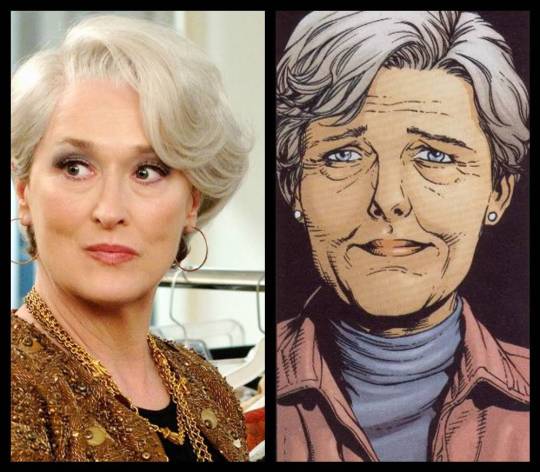
Kate Mara as Lana Lang

Tobey Maguire as Pete Ross

Sean Bean as Jor-El

Kate Winslett as Lara Lor-Van

Rupert Grint as Jimmy Olsen

William Shatner as Perry White

Rachel McAdams as Cat Grant

Patrick Warburton as Steve Lombard

Sterling K Brown as Ron Troupe

Billie Piper as Maggie Sawyer

Christopher Meloni as Dan Turpin

Danny Glover as William Henderson

Richard Schiff as Dr Emil Hamilton
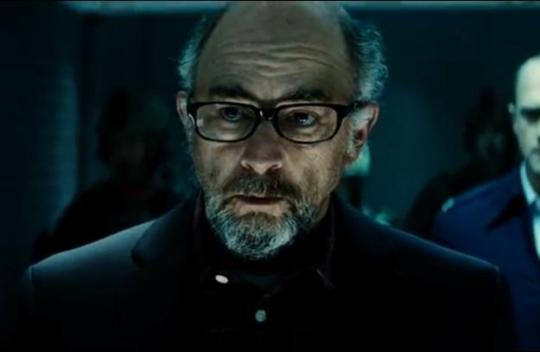
Clancy Brown as General Sam Lane

Terry O’Quinn as Lex Luthor

Tao Okamoto as Mercy Graves

Viggo Mortensen as General Zod

Lena Headley as Faora

Robert Maillet as Non

The Batman(in my version, The Batman comes after Man Of Steel, this will be about how The Joker and Harley Quinn kills Jason Todd, yes both Joker and Harley kill Jason. It’s important that everyone realizes Harley is a villain and not a anti-hero)
Karl Urban as Batman/Bruce Wayne

Peter Capaldi as Alfred Pennyworth

Michael Keaton as Thomas Wayne
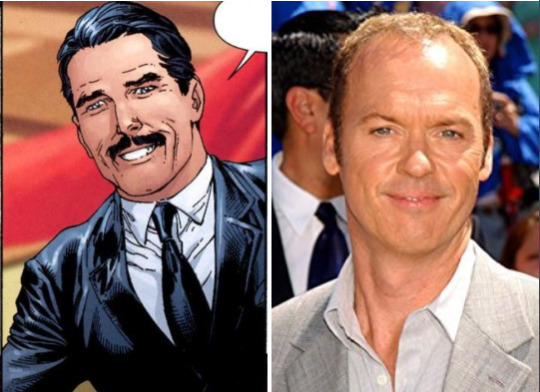
Kim Basinger as Martha Wayne

Courtney B Vance as Lucius Fox

Kate Mulgrew as Dr Leslie Thompkins

Diane Kruger as Vicki Vale

Mark Pellegrino as Jack Ryder/The Creeper

Jesús Castro as Nightwing/Dick Grayson

Jane Levy as Barbara Gordon/Oracle

Matthew Daddario as Jason Todd/Robin

Morena Baccarin as Catwoman/Selina Kyle

or Odette Annable as Catwoman/Selina Kyle

or Eiza González as Catwoman/Selina Kyle

Bryan Cranston as James Gordon

Michael Madsen as Harvey Bullock

Stephanie Beatriz as Renee Montoya

Jodie Foster as Sarah Essen

Ben Mendelsohn as Dr Jeremiah Arkham

Rockmond Dunbar as Aaron Cash

Joe Giligun as The Joker

Amanda Seyfried as Harley Quinn

And on the Batcomputer we’d see cameos from the other Batman villains
Alfred Molina as The Penguin/Oswald Chesterfield Cobblepot

Liev Schreiber as Two-Face/Harvey Dent

David Tennant as The Riddler

Tobin Bell as Mr Freeze/Victor Fries

Jessica Chastain as Poison Ivy/Pamela Isley

Michael Wincott as Black Mask/Roman Sionis

Adam Driver as Scarecrow/Jonathan Crane

Ben Kingsley as Hugo Strange

Toby Jones as Mad Hatter/Jervis Tetch

Majid Al Masri as Ra’s Al Ghul

Shanina Shaik as Talia Al Ghul

Yasmine Al Massri as Nyssa Raatko

Zhang Ziyi as Lady Shiva

John Lithgow as Arnold Wesker/The Ventriloquist

Adewale Akinnuoye-Agbaje as Killer Croc/Waylon Jones
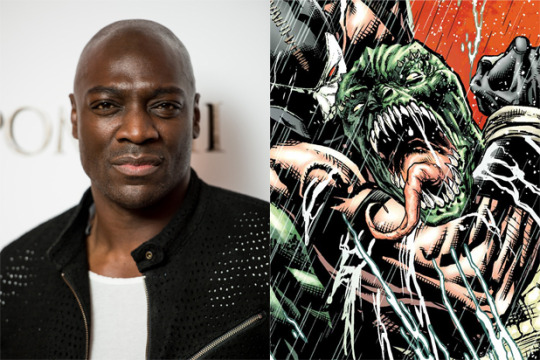
Pedro Pascal as Deadshot/Floyd Lawton

Kevin Durand as Solomon Grundy

Jackie Earle Haley as Victor Zsasz

Leonardo DiCaprio as Clayface/Basil Karlo

Woody Harrelson as Firefly/Garfield Lynns

Doug Jones as Man-Bat /Dr. Kirk Langstrom

Daniel Radcliffe as Anarky

Conleth Hill as Calandar Man/Julian Day

Tom Berenger as Commissioner Gillian B. Loeb

Michael Weatherly as Detective Arnold Flass

Will Arnett as Lt. Howard Branden

Robert DeNiro as Carmine Falcone

Al Pacino as Salvatore Maroni

Charlie Heaton as Alberto Falcone

Gwendoline Christie as Sofia Falcone

Vincent Karthieser as Mario Falcone
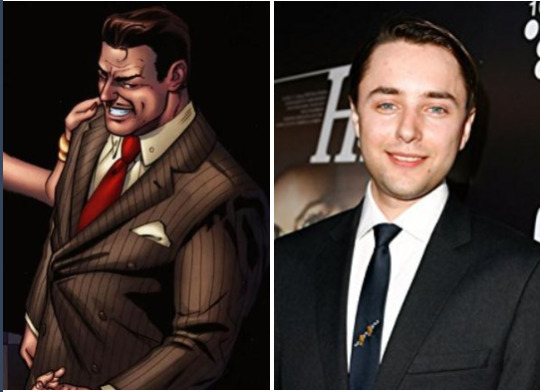
Nick Nolte as Rupert Thorne
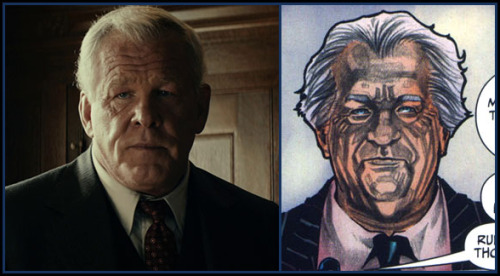
Brad Dourif as Joe Chill
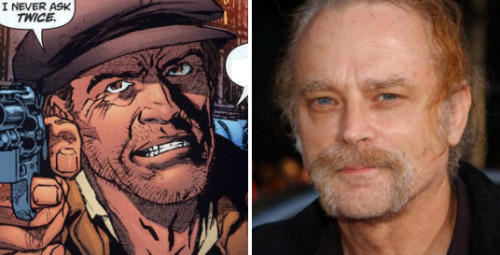
World’s Finest(This is not BVS this is World’s Finest. This is not a dumbed down fight scene just to kiss Frank Miller’s ass to adapt the most overrated comic. I care more about Batman and Superman having strong differences and overcoming them and working together in the end to stop a common threat. They are called the World’s Finest for a reason.)
Karl Urban as Batman/Bruce Wayne

Josh Hartnett as Superman/Clark Kent

Emily Blunt as Lois Lane

Peter Capaldi as Alfred Pennyworth

Bryan Cranston as James Gordon

Michael Madsen as Harvey Bullock

Stephanie Beatriz as Renee Montoya

Rupert Grint as Jimmy Olsen

William Shatner as Perry White

Billie Piper as Maggie Sawyer

Christopher Meloni as Dan Turpin

Joe Gilgun as The Joker

Amanda Seyfried as Harley Quinn

Terry O’Quinn as Lex Luther

Tao Okamoto as Mercy Graves

Wonder Woman
Gemma Arterton as Wonder Woman/Diana Prince

Ryan Gosling as Steve Trevor

Lucy Davis as Etta Candy

Lynda Carter as Hippolyta

Alexandra Daddario as Artemis

Lisa Berry as General Philippus

Robin Wright as General Antiope

Gerard Butler as Ares

Anne Hathaway as Athena

Lucy Lawless as Hera

Liam Neeson as Zeus

Peter Stormare as Hades

Green Lantern(Basically what the animated movie First Flight was. But Buddy Cop adventures of Hal and Sinestro. Hal Jordan mentoring under Sinestro (who does NOT turn evil at the end of the first, but instead the end of the second movie and in the third movie is when we get Sinestro Corps, however my big change to Sinestro’s character is Sinestro isn't a tyrant of his own people. Have it be that Sinestro used the ring to better his own world and his people love him, but the Guardians saw that as interference and marked Sinestro as a threat)
Chris Pine as Green Lantern/Hal Jordan
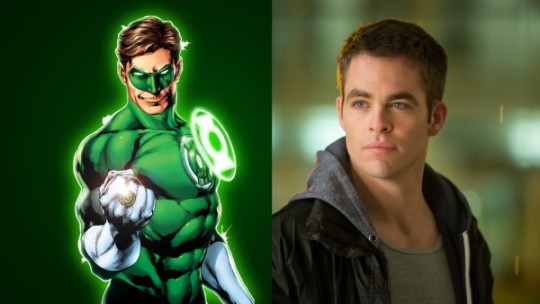
Lauren Cohan as Carol Ferris

Luke Evans as Sinestro

Zachary Quinto as Tomar-Re

Ken Watanabe as Abin Sur

Scott Bakula as Alan Scott

Ron Pearlman as Kilowog

Michael Sheen as Hector Hammond

With cameos from future Green Lanterns
Trevante Rhodes as John Stewart/Green Lantern

Diego Luna as Kyle Rayner

Aaron Paul as Guy Gardner

Saad Siddiqui as Simon Baz

Dianne Guerrero as Jessica Cruz

The Flash
Garrett Hedlund as The Flash/Barry Allen

Anna Kendrick as Iris West

David Duchovny as Henry Allen

Gillian Anderson as Nora Allen

Sendhil Ramamurthy as David Singh

Lennie James as James Forrest

Peter Weller as Darryl Frye

Juno Temple as Patty Spivot

Tiffany Espensen as Linda Park

Bruce Greenwood as Jay Garrick
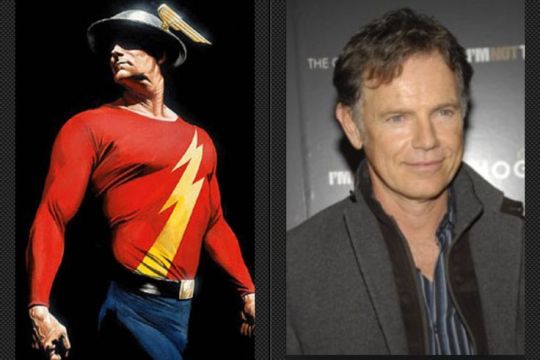
Peyton Meyer as Wally West/Kid Flash

Michael C Hall as Eobard Thawne/Reverse Flash

Aquaman
Alexander Skarsgard as Aquaman/Arthur Curry

Christina Hendricks as Mera

Stellan Skarsgård as Tom Curry

Kelsey Grammer as Nuidis Vulko
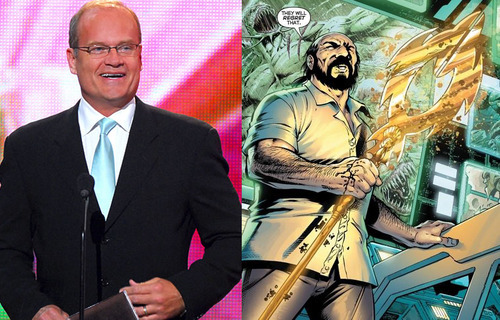
Cary-Hiroyuki Tagawa as Dr. Stephen Shin
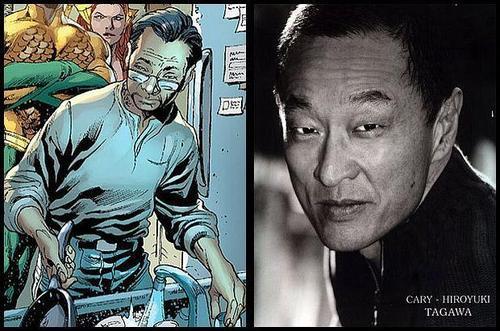
Nicole Kidman as Atlanna

Michael K Williams as Black Manta

Gustaf Skarsgard as Ocean Master

Teen Titans(I think it’s better to have Teen Titans instead of Suicide Squad in phase 1)
Jesús Castro as Nightwing/Dick Grayson

Ray Fisher as Cyborg/Victor Stone

Sharon Belle as Starfire/ Koriand'r

Natasha Negovanlis as Raven/Rachel Roth

Dylan O'Brien as Beast Boy/Garfield Logan

Peyton List as Terra
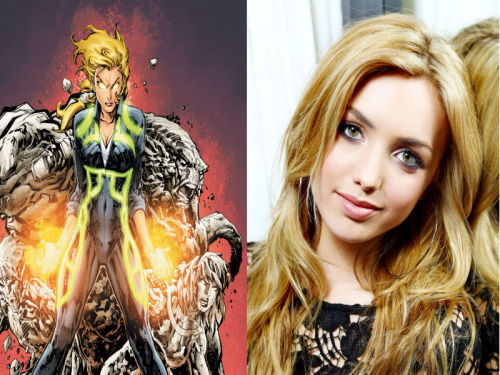
Joe Manganiello as Deathstroke/Slade Wilson

Justice League(White Martians will be the villains and J’onn is the one who unites the Justice League)
Karl Urban as Batman/Bruce Wayne

Josh Hartnett as Superman/Clark Kent

Gemma Areton as Wonder Woman/Diana Prince

Garrett Hedlund as The Flash/Barry Allen

Alexander Skarsgard as Aquaman/Arthur Curry

Chris Pine as Green Lantern/Hal Jordan

Giancarlo Esposito as J’onn J’onzz/Martian Manhunter

Phase 2
Man Of Steel 2
Josh Hartnett as Superman/Clark Kent

Emily Blunt as Lois Lane

Elle Fanning as Supergirl/Kara Zor-El

Meryl Streep as Martha Kent
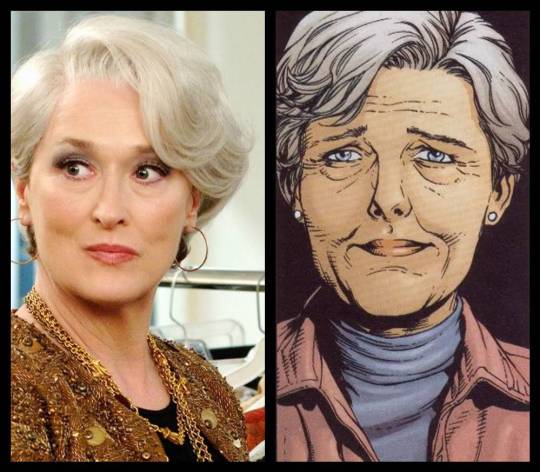
Rupert Grint as Jimmy Olsen

William Shatner as Perry White

Rachel McAdams as Cat Grant

Patrick Warburton as Steve Lombard

Warner Miller as Ron Troupe

Billie Piper as Maggie Sawyer

Robert De Niro as Dan Turpin

Mark Harmon as William Henderson
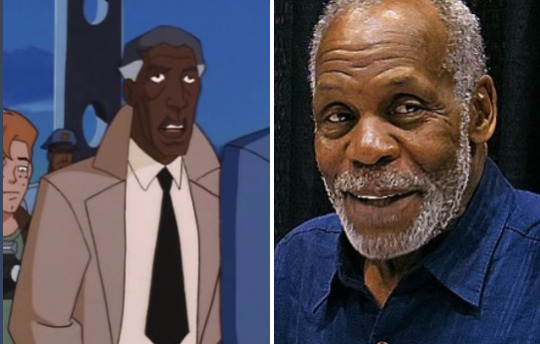
Richard Schiff as Dr Emil Hamilton

Clancy Brown as General Sam Lane

Terry O’Quinn as Lex Luthor

Ralph Fiennes as Brainiac

Shazam(In title name and Billy shouting only, the choice to call Billy’s hero persona Shazam is a confusing mess)
Channing Tatum as Captain Marvel

Noah Schnapp as Billy Batson

Finn Wolfhard as Freddy Freeman

Rowan Blanchard as Mary Batson

Jim Beaver as Uncle Dudley

Ernie Hudson as Jebidiah of Canaan/The Wizard of Shazam

Jeffrey Wright as Tawky Tawny

Hugh Laurie as Dr. Thaddeus Sivana

Dwayne Johnson as Black Adam

Suicide Squad
Mo´Nique as Amanda Waller

Daniel Craig as Colonel Rick Flag

Pedro Pascal as Deadshot/Floyd Lawton

Jonny Lee Miller as Captain Boomerang

Kristen Bell as Killer Frost
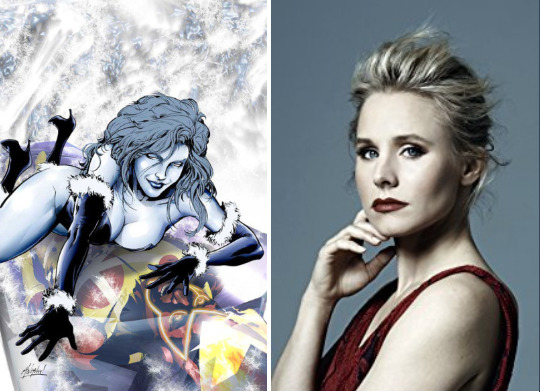
Derek Mears as King Shark

Michael Jai White as Bronze Tiger

Karen Fukuhara as Katana

Holland Roden as Plastique

Wonder Woman 2
Gemma Areton as Wonder Woman/Diana Prince

Ryan Gosling as Steve Trevor

Lynda Carter as Hippolyta

Alexandra Daddario as Artemis

Lisa Berry as General Philippus

Angelina Jolie as Circe

Charlize Theron as Cheetah

Green Arrow
Charlie Hunam as Green Arrow/Oliver Queen

Katheryn Winnick as Black Canary/Dinah Lance

Taron Egerton as Arsenal/Roy Harper

Alona Tal as Speedy/Mia Dearden

Common as John Diggle

Josh Gad as Henry Fyff
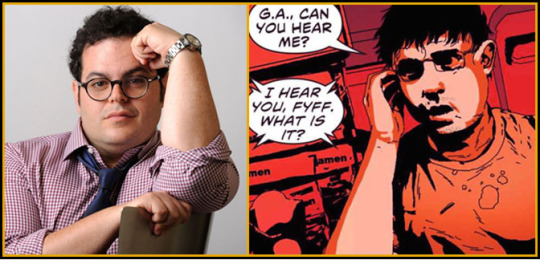
Donnie Yen as Yao Fei

Devon Aoki as Shado

Keanu Reeves as Merlyn

Bird Of Prey
Jane Levy as Barbara Gordon/Oracle

Teresa Ting as Batgirl/Cassandra Cain

Katheryn Winnick as Black Canary/Dinah Lance
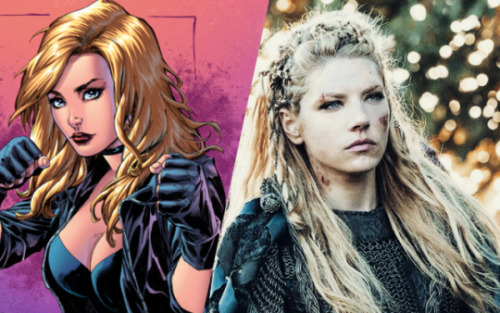
Eliza Dushku as Helena Bertinelli/The Huntress

Tatiana Maslany as Lady Blackhawk/Zinda Blake

Gugu Mbatha-Raw as Vixen/Mari Jiwe McCabe

Lily Collins as Starling/Evelyn Crawford

Zhang Ziyi as Lady Shiva

Batman Under The Red Hood
Karl Urban as Batman/Bruce Wayne

Peter Capaldi as Alfred Pennyworth

Matthew Daddario as Red Hood/Jason Todd

Bryan Cranston as James Gordon

Michael Madsen as Harvey Bullock

Stephanie Beatriz as Renee Montoya

Michael Wincott as Black Mask/Roman Sionis

Joe Giligun as The Joker

Amanda Seyfried as Harley Quinn

Shanina Shaik as Talia Al Ghul

Justice League:Legion Of Doom
Karl Urban as Batman/Bruce Wayne
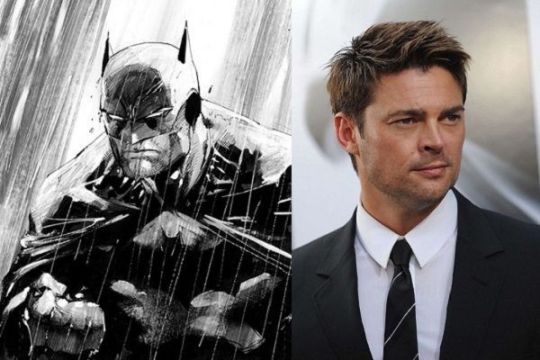
Josh Hartnett as Superman/Clark Kent

Gemma Areton as Wonder Woman/Diana Prince

Garrett Hedlund as The Flash/Barry Allen

Alexander Skarsgard as Aquaman/Arthur Curry

Chris Pine as Green Lantern/Hal Jordan
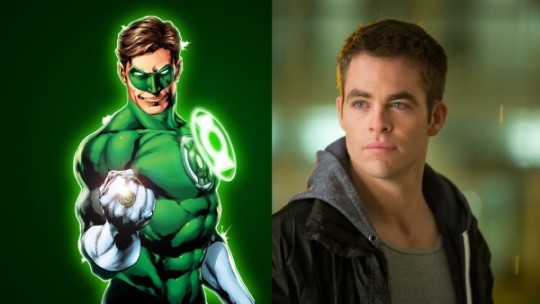
Giancarlo Esposito as J’onn J’onzz/Martian Manhunter

Terry O’Quinn as Lex Luthor

Joe Gilgun as The Joker

Joe Manganiello as Deathstroke

Michael K Williams as Black Manta

Charlize Theron as Cheetah

Dwayne Johnson as Black Adam

Luke Evans as Sinestro

Michael C Hall as Reverse Flash/ Eobard Thawne

#DC#Fancasts#DCEU#Superman#Batman#Wonder Woman#The Flash#Aquaman#Martian Manhunter#Teen Titans#Justice League#Suicide Squad#Shazam#Green Arrow#Birds Of Prey#Supergirl#Nightwing#Starfire#Raven#Beast Boy#Cyborg#Red Hood#Batman Villains#DC Villains#Batfamily
82 notes
·
View notes
Text
“What can I do?” Oh I don’t know, APOLOGIZE!
1 note
·
View note
Text
Atypical (1ª e 2ª tempordas)

Atypical é uma série original da Netflix que conta a história de Sam Gardner em busca de uma namorada. E o que isso tem de mais? Você me pergunta. Bom, Sam tem o Transtorno do Espectro do Autismo, ou seja, Sam é autista. Mas não é como se história girasse apenas em torno disso.
Antes de mais nada eu preciso dizer que eu simplesmente amei essa série como eu não amava nenhuma outra desde This Is Us, e vou explicar o porquê.
Eu nunca tinha tido contato com o autismo antes, tinha uma leve noção do que era, mas nada muito profundo. De acordo com as pesquisas que eu fiz após assistir a série me pareceu que o tanto o roteiro como o ator que faz o Sam (Keir Gilchrist) souberam muito bem como representar o transtorno, além do que, rapidamente você se apega ao Sam com sua obsessão bizarra, porém de certa forma interessante, por pinguins e seu fone anti-ruído.

Bom, Atypical não trata somente do Sam, mas sim de tudo e todos que estão ao redor dele, mas com suas próprias história, se é que me entende. Cada personagem tem sua história individual apesar de muitas vezes serem influenciados pelo Sam, já que temos principalmente as histórias que envolvem seus familiares, no caso, a mãe, o pai e a irmã.
Eu pelo menos fiquei rapidamente envolvida pelo enredo e pelo que cada um enfrenta tendo como a linha principal o Sam enfrentando os desafios, principalmente sociais, que o autismo traz. Temos uma mãe, Elsa (Jennifer Jason Leigh), que teve a vida inteira dedicada ao filho tentando se encontrar novamente, um pai, Doug (Michael Rapaport), que está buscando estreitar o relacionamento com o filho, e a irmã, Casey (Brigette Lundy-Paine), enfrentando desafios na escola e se descobrindo na vida.

Os personagens “secundários” também são parte importante para a trama ajudando no desenvolvimento dos personagens principais. Devo dizer que eu gosto muito do Zahid (Nik Dodani), que é um personagem que à primeira vista parece muito aleatório, mas que se mostra muito importante no desenvolvimento do Sam. Apesar de todo muito achar o Zahid “fracassado”, Sam acha ele um dos caras mais inteligentes que ele conhece, distorcendo nossa visão do que é o padrão, e Zahid trata o Sam como um cara normal, diferente das outras pessoas ao redor dele incluindo sua própria mãe. Isso é algo que eu gosto na irmã do Sam também, que apesar de protegê-lo, o trata como se não houvesse nada de diferente nele, tentando não se importar por toda atenção sempre ter sido do Sam.

As narrações do Sam no inicio dos episódios também é muito interessante porque quase sempre é um fato científico que de alguma forma vai se relacionar com o que vai acontecer naquele episódio.
Além disso, a série sabe dosar muito bem o drama e a comédia sem forçar nada em momento nenhum, usando o autismo do Sam para fazer piadas “erradas” mas não num tom ofensivo. E o drama também relacionado a isso, porém o drama vem muito mais de outras coisas do que do autismo, o que eu achei bem interessante.
Atypical é uma série sobre um garoto autista em que o autismo é tratado como uma coisa normal, é como se fosse só mais um detalhe na trama, mas que faz a história girar, influenciando ou não outros personagens ou outros aspectos da histórias.

A segunda temporada segue o ritmo da primeira, entrando mais a fundo nas questões do Sam em meio à conturbações envolvendo sua família e sua jornada em busca da independência enfrentando o novo. Os dramas de cada um dos personagens continuam sendo a parte importante no enredo.
Pra mim, as duas temporadas seguem uma linha muito constante, entrando mais a fundo nos dilemas e vida da família Gardner na segunda temporada, trazendo uma evolução muito legal dos personagens, que eu espero que continue acontecendo nas próximas temporadas.

No fim das contas, Atypical é uma série que antes de tudo nos faz pensar sobre o que consideramos como padrão, tendo um garoto que não é considerado “normal”, mas que mostra que talvez ele seja o mais normal de todos, ou que todos nós somos “Atypical”
6 notes
·
View notes
Text
Who Controls Congress Democrats Or Republicans
New Post has been published on https://www.patriotsnet.com/who-controls-congress-democrats-or-republicans/
Who Controls Congress Democrats Or Republicans

Republicans Can Win The Next Elections Through Gerrymandering Alone
Democrats Target Vulnerable Republican Seats In Effort To Gain Control Of Congress | NBC News NOW
Even if voting patterns remain the same, Republicans could still win more seats in Congress through redistricting
In Washington, the real insiders know that the true outrages are whats perfectly legal and that its simply a gaffe when someone accidentally blurts out something honest.
And so it barely made a ripple last week when a Texas congressman said aloud whats supposed to be kept to a backroom whisper: Republicans intend to retake the US House of Representatives in 2022 through gerrymandering.
We have redistricting coming up and the Republicans control most of that process in most of the states around the country, Representative Ronny Jackson told a conference of religious conservatives. That alone should get us the majority back.
Hes right. Republicans wont have to win more votes next year to claim the US House.
In fact, everyone could vote the exact same way for Congress next year as they did in 2020 when Democratic candidates nationwide won more than 4.7m votes than Republicans and narrowly held the chamber but under the new maps that will be in place, the Republican party would take control.
If Republicans aggressively maximize every advantage and crash through any of the usual guardrails and they have given every indication that they will theres little Democrats can do. And after a 2019 US supreme court decision declared partisan gerrymandering a non-justiciable political issue, the federal courts will be powerless as well.
House Republicans And Democrats Represent Divergent Americas
An Atlantic analysis finds that congressional districts racial makeup, and their residents level of education, largely determines which party represents them in the House.
Across lines of race, education, age, and geography, Democrats and Republicans in the House of Representatives increasingly represent two distinct nations, with strikingly little crossover.
An Atlantic analysis of the latest census data shows that the House districts represented by the two parties overwhelmingly track the same demographic and economic fissures that guided the fierce presidential race between Donald Trump and Hillary Clinton. This widening chasm between the two sides will shape both the legislative debate over the coming two years and the next competition for control of the House in the 2018 midterm elections.
Th Congress 2017 And 2018
Republicans held both chambers of Congress and the presidency but accomplished little of the party’s agenda due partially to infighting and partially to clashes with Democrats.
White House:;;Republican
House:;Republicans held 236;seats, Democrats held 196 seats; there were three vacancies.
Senate:;Republicans;held 50 seats, Democrats held 47 seats; there were two independents, both of whom caucused with the Democrats. There was one vacancy.
Don’t Miss: Did Trump Say Republicans Are Stupid
Changes To House Rules
After Democrats took control of the House in the 116th Congress, they voted to change some rules from the previous session of Congress when Republicans were in control. Some of the changes appear below.
PAYGO: Democrats approved PAYGO, a provision that requires legislation that would increase the deficit to be offset by spending cuts or revenue increases.
Ethics: Democrats made changes to House ethics rules that required all House members to take ethics training, not just new members. The rules also required members to reimburse taxpayers for settlements that that result from a members discrimination of someone based on race, religion, sex, national origin, or disability, among other things. Lawmakers were also prohibited from sitting on corporate boards.
Climate change committee: Democrats created a new climate change committee to address the issue. The committee was not given subpoena power or the ability to bring bills to the floor.
A full explanation of the rules changes can be viewed here.
The Party Thats Actually Best For The Economy


Many analyses look at which party is best for the economy. A study from the National Bureau of Economic Research found that Democratic presidents since World War II have performed much better than Republicans. On average, Democratic presidents grew the economy 4.4% each year versus 2.5% for Republicans.
A study by Princeton University economists Alan Blinder and Mark Watson found that the economy performs better when the president is a Democrat. They report that by many measures, the performance gap is startlingly large. Between Truman and Obama, growth was 1.8% higher under Democrats than Republicans.
A Hudson Institute study found that the six years with the best growth were evenly split between Republican and Democrat presidents.
Most of these evaluations measure growth during the presidents term in office. But no president has control over the growth added during his first year. The budget for that fiscal year was already set by the previous president, so you should compare the gross domestic product at the end of the presidents last budget to the end of his predecessors last budget.
For Obama, that would be the fiscal year from October 1, 2009, to September 30, 2018. Thats FY 2010 through FY 2017. During that time, GDP increased from $15.6 trillion to $17.7 trillion, or by 14%. Thats 1.7% a year.
The chart below ranks the presidents since 1929 on the average annual increase in GDP.
President
1.4%
A president would have better growth if he had no recession.
Also Check: What Caused Republicans To Gain Power In Congress In 1938
Four Flips For Democrats One For Republicans
Going into the election, the Democrats held 47 seats in the U.S. Senate while the Republicans held 53.
The Democrats have succeeded in flipping four seats: in Colorado, where former Governor John Hickenlooper easily ousted incumbent Cory Gardner, in Arizona, where former astronaut Mark Kelly defeated incumbent Martha McSally, and in Georgia, where Raphael Warnock defeated incumbent Kelly Loeffler and Jon Ossoff defeated incumbent David Perdue.
The Republicans have wrested back one previously Democratic seat in , where one-term incumbent Doug Jones was emphatically denied a second term by Tommy Tuberville, a former college head football coach, most recently at the University of Cincinnati.
Outgoing freshman Sens. Jones and Gardner were both considered vulnerable, as each was elected with less than 50% of the vote in 2018.
Republican Thom Tilliss victory over Cal Cunningham in North Carolinaby less than 2 percentage points according to the North Carolina Secretary of States latest tallyis one of several close Senate races that were not called until after election night. In addition to the seats from Georgia, close races also include the victories of incumbent senators Gary Peters and Susan Collins , which were not called until Nov. 4.
Which Congressional Action Was An Attempt By Radical Republicans To Advance Their Plan For Reconstruction
1867 Military Reconstruction ActThe 1867 Military Reconstruction Act, which encompassed the vision of Radical Republicans, set a new direction for Reconstruction in the South. Republicans saw this law, and three supplementary laws passed by Congress that year, called the Reconstruction Acts, as a way to deal with the disorder in the South.
You May Like: Why Are Republicans Wearing Blue Ties
Are Republicans Or Democrats Better For Stocks
Data over the past 78 years;shows that party control over either chamber has relatively little to do with long-term changes in the broad S&P 500 stock index.
Starting in 1942, the numbers indicate that Republican and Democratic majorities in the House and Senate have had little impact on stock prices in the two years following an election.;
The same holds true when you look at the number of party seats gained or lost in the House and Senate, against stock prices in the S&P 500 during that period.;
The data yields similar results for the November to November cycle, which is a gauge of market sentiment to the election, as well as January to January, which shows the actual market performance of the Congress.;
Isan Control Of Congress
U.S. Congress divided: Democrats take control of House, Republicans retain Senate
This table shows the number of Congresses in which a party controlled either the House, the Senate, or the presidency.
Party
^U.S. Senate: Party Divisions
^The Anti-Administration Party was not a formal political party but rather a faction opposed to the policies of Treasury Secretary Alexander Hamilton. The faction eventually coalesced into the Democratic-Republican Party.
^The Pro-Administration Party was not a formal political party but rather a faction supportive of the policies of Treasury Secretary Alexander Hamilton. The faction eventually coalesced into the Federalist Party.
^ abThough Washington never formally joined a party, he was broadly sympathetic to the coalition which later became the Federalist Party.
^Washington disapproved of formal political parties and refused to join either party, though he became a symbol of the Federalist Party.
^Adams won election as a Democratic-Republican, but he sought re-election as a National Republican.
^Whig President William Henry Harrison died April 4, 1841, one month into his term, and was succeeded by John Tyler, who served for the remainder of the term. Tyler had been elected as vice president on the Whig ticket, but he became an independent after the Whigs expelled him from the party on September 13, 1841.
^Whigs held their only trifecta from March 4, 1841 until later that year when the Whigs expelled Tyler from the party on September 13 and he became an Independent.
^
Also Check: When Did Republicans And Democrats Switch Platforms
Who Are The Winners And Losers
Maine Democrats had high hopes of unseating Susan Collins, the 67-year-old moderate Republican who had been trailing her Democrat rival in the polls for months.
But Sara Gideon, 48, conceded in a call to Ms Collins on Wednesday afternoon.
So far, Democrats have managed a net gain of one seat in the Senate election.
Democratic former governor John Hickenlooper won a key Colorado seat from the Republican incumbent Cory Gardner.
Mr Hickenlooper, who stood for the Democratic nomination for president, was governor of Colorado for two terms from 2011 until last year. His rival was considered particularly vulnerable because of his allegiance to President Trump.
In Arizona, former astronaut Mark Kelly defeated Republican incumbent and former fighter pilot Martha McSally. Mr Kelly earlier said he was “confident that when the votes are counted, we’re going to be successful in this mission”.
However, Republican Senate Majority Leader Mitch McConnell and Trump ally Lindsey Graham have both been re-elected in their seats of Kentucky and South Carolina respectively.
And in Alabama, Republican candidate Tommy Tuberville took a seat from the Democratic incumbent Doug Jones.
Opinion: The House Looks Like A Gop Lock In 2022 But The Senate Will Be Much Harder
Redistricting will take place in almost every congressional district in the next 18 months. The party of first-term presidents usually loses seats in midterms following their inauguration President Barack Obamas Democrats lost 63 seats in 2010 and President Donald Trumps Republicans lost 40 in 2018 but the redistricting process throws a wrench into the gears of prediction models.
President George W. Bush saw his party add nine seats in the House in 2002. Many think this was a consequence of the 9/11 terrorist attacks on America nearly 14 months earlier, but the GOP, through Republican-led state legislatures, controlled most of the redistricting in the two years before the vote, and thus gerrymandering provided a political benefit. Republicans will also have a firm grip on redistricting ahead of the 2022 midterms.
The Brennan Center has that the GOP will enjoy complete control of drawing new boundaries for 181 congressional districts, compared with a maximum of 74 for Democrats, though the final numbers could fluctuate once the pandemic-delayed census is completed. Gerrymandering for political advantage has its critics, but both parties engage in it whenever they get the opportunity. In 2022, Republicans just have much better prospects. Democrats will draw districts in Illinois and Massachusetts to protect Democrats, while in Republican-controlled states such as Florida, Ohio and Texas, the GOP will bring the redistricting hammer down on Democrats.
Read more:
Read Also: Why Are Republicans Wearing Blue Ties
Why Did House Democrats Underperform Compared To Joe Biden
The results of the 2020 elections pose several puzzles, one of which is the gap between Joe Bidens handsome victory in the presidential race and the Democrats disappointing performance in the House of Representatives. Biden enjoyed an edge of 7.1 million votes over President Trump, while the Democrats suffered a loss of 13 seats in the House, reducing their margin from 36 to just 10.
Turnout in the 2018 mid-term election reached its highest level in more than a century. Democrats were fervently opposed to the Trump administration and turned out in droves. Compared to its performance in 2016, the partys total House vote fell by only 2%. Without Donald Trump at the head of the ticket, Republican voters were much less enthusiastic, and the total House vote for Republican candidates fell by nearly 20% from 2016. Democratic candidates received almost 10 million more votes than Republican candidates, a margin of 8.6%, the highest ever for a party that was previously in the minority. It was, in short, a spectacular year for House Democrats.
To understand the difference this Democratic disadvantage can make, compare the 2020 presidential and House results in five critical swing states.
Table 1: Presidential versus House results
Arizona
Why Democratic Departures From The House Have Republicans Salivating


A growing number of Democrats in battleground districts are either retiring or leaving to seek higher office, imperiling the partys control of the House and President Bidens expansive agenda.
WASHINGTON With 18 months left before the midterms, a spate of Democratic departures from the House is threatening to erode the partys slim majority in the House and imperil President Bidens far-reaching policy agenda.
In the past two months, five House Democrats from competitive districts have announced they wont seek re-election next year. They include Representative Charlie Crist of Florida, who on Tuesday launched a campaign for governor, and Representative Tim Ryan of Ohio, who will run for the Senate seat being vacated by Rob Portman. Three other Democrats will leave vacant seats in districts likely to see significant change once they are redrawn using the data from the 2020 Census, and several more are weighing bids for higher office.
An early trickle of retirements from House members in competitive districts is often the first sign of a coming political wave. In the 2018 cycle, 48 House Republicans didnt seek re-election and 14 of those vacancies were won by Democrats. Now Republicans are salivating over the prospect of reversing that dynamic and erasing the Democrats six-seat advantage.
Its like going to war on a battlefield but you dont know where youre fighting, when youre fighting or who youre fighting, Mr. Israel said.
Recommended Reading: How Many States Are Controlled By Republicans
Y Divisions Of United States Congresses
Party divisions of United States Congresses have played a central role in the organization and operations of both chambers of the United States Congressthe Senate and the House of Representativessince its establishment as the bicameral legislature of the Federal government of the United States in 1789. Political parties had not been anticipated when the U.S. Constitution was drafted in 1787, nor did they exist at the time the first Senate elections and House elections occurred in 1788 and 1789. Organized political parties developed in the U.S. in the 1790s, but political factionsfrom which organized parties evolvedbegan to appear almost immediately after the 1st Congress convened. Those who supported the Washington administration were referred to as “pro-administration” and would eventually form the Federalist Party, while those in opposition joined the emerging Democratic-Republican Party.
Census Data Sets Up Redistricting Fight Over Growing Suburbs
The once-a-decade battle over redistricting is set to be a showdown over the suburbs, as new census data showed rapid growth around some of the nations largest cities and shrinking population in many rural counties.
From Texas to Florida, some of the biggest gains reported Thursday came in states where Republicans will control the redistricting process, but often in and around cities where Democrats have been faring well in recent elections.
The new detailed population data from the 2020 census will serve as the building block to redraw 429 U.S. House districts in 44 states and 7,383 state legislative districts across the U.S. The official goal is to ensure each district has roughly the same number of people.
But many Republicans and Democrats also will be trying to ensure the new lines divide and combine voters in ways that make it more likely for their partys candidates to win future elections, a process called gerrymandering. The parties successes in that effort could determine whether taxes and spending grow, climate-change polices are approved or access to abortion is expanded or curtailed.
Also Check: Did Donald Trump Say Republicans Are Dumb
The Winding Road To Democratic Control
Following an anxious four days of waiting after the 2020 general election, nearly all major news networks declared that Joe Biden had exceeded 270 electoral votes and won the presidency. Democrats also retained control of the U.S. House, although their majority has been trimmed back .
But the U.S. Senate still hung in the balance, a tantalizing prize for Democrats dreaming of a trifecta, and a bulwark against a Democratic agenda for Republicans who seek to hold onto some power under the new Biden administration that will be sworn in on Jan. 20, 2021.
Republicans claimed 50 Senate seats after the November election, two more than the 48 seats claimed by the Democratic Caucus at that time.
The Senates balance of power teetered on the fulcrum of Georgias two seats, both of which were decided by the January 5th runoff election. Georgia law requires candidates to be voted in with at least 50% of the votes cast; if a candidate does not reach that threshold the two candidates who received the highest number of votes face one another in a runoff election.
Georgias runoff election featured these match-ups:
Incumbent David Perdue versus Jon Ossoff .According to Georgias Secretary of State, Perdue received 88,000 more votes than Ossoff, but came up just shy of the 50% needed to avoid a runoff. This is in part due to the 115,000 votes that went to Libertarian candidate Shane Hazel who will not appear on the January ballot.
0 notes
Text
Okay on Doug. And I'm sitting here thinking. His support for sam is a double edged sword for me, let me try and be comprehensive for a minute:
I love that he is supporting Sam and the whole Antarctica thing. I love that he is reassuring to Sam, advocating that he's capable. Because he is capable.
What I don't love is that now that things with Sam are "easier" is when he wants to be interested. And now that things with Casey are "harder" he has switched to supporting Sam. That's literally what it feels like and he pretty much said that himself?
Anyways; Sam has had Casey, Elsa, Zahid and Paige in his corner the whole time. But now that Sam has reached this more independent stage this is when Doug wants to hang out with him. Or want to show interest.
He wants to go with Sam to Antarctica now that Sam has become more acclimated with the world around him.
#idk if this even makes sense lol#anti doug gardner#??? its not anti tbh it's a critical assessment but people are sensitive so i will tag 💜#atypical#atypical spoilers
29 notes
·
View notes
Text
POLITICS
The 13 Races That Will Determine The Senate Majority
— NPR | October 29, 2020 | Susan Davis

President Trump campaigned with Sen. Martha McSally, R-Ariz., in Prescott, Ariz., this month. McSally is a top target of Senate Democrats, who are hoping to flip her seat blue on Election Day. Alex Brandon/AP
Republicans hold the Senate 53-47. (There are two independents — Angus King of Maine and Bernie Sanders of Vermont — but they caucus with Democrats and therefore should be counted that way in the math for Senate control.)
To flip the Senate, Democrats would need to net-gain four seats outright or three seats and control of the White House, because in a 50-50 Senate — which is possible this year — the vice president breaks the tie. Republicans can lose up to three seats and hold the majority, as long as President Trump wins reelection.
Democrats are forecast to gain two to six seats. Control of the Senate remains a jump ball days out from Election Day. These are the races that will decide it:
Democratic-held seats (Republicans favored to gain one seat)
Alabama: Sen. Doug Jones is the only Democratic incumbent in a tough race this year. He is expected to lose to former Auburn University football coach Tommy Tuberville, the Republican challenger. Trump remains wildly popular in Alabama, and it would be very difficult for Jones to overcome that advantage in a nationalized political climate. A Republican pickup here would mean Democrats would need to pick up four GOP-held seats and win the White House for Senate control.
Republican-held Seats (Democrats Favored to Gain Two to Six Seats)
Arizona: GOP Sen. Martha McSally is running against Democrat Mark Kelly, the popular and well-known former astronaut turned gun control advocate after the 2011 Tucson shooting of his wife, then-Rep. Gabby Giffords, D-Ariz. Kelly has led in all but one public poll in 2020. Kelly has also significantly outraised McSally.
Colorado: Republican Sen. Cory Gardner is running against former Gov. John Hickenlooper, a former 2020 Democratic presidential candidate. Hickenlooper initially indicated he was not interested in a Senate run but jumped in after his presidential campaign faded. He has run a lackluster campaign, but the overall Democratic pull of the state is probably enough to carry Hickenlooper to victory.
Iowa: First-term GOP Sen. Joni Ernst is running against real estate developer Theresa Greenfield. This race has gotten increasingly competitive in the closing months of the campaign. Ernst had been the early favorite for reelection, but the race has become a toss-up in the close.
Maine: Republican Sen. Susan Collins is running against Democrat Sara Gideon, the state's House speaker. Few others have seen their political stock fall as fast as Collins has. Once one of the most popular senators in the U.S., she now ranks at the bottom. The polarization of the Trump era has done no favors for centrist moderates. Collins is a savvy campaigner and knows her state and how to win, but Gideon has been able to capitalize on Collins' sinking political clout and anti-Trump sentiment.
Montana: Republican Sen. Steve Daines is running against term-limited Democratic Gov. Steve Bullock, arguably the only Democrat who could make Montana competitive for the party. Bullock is well-known and has generally been given decent marks by voters for his handling of the coronavirus pandemic. Montana is a red state that wants to stay that way, and that helps Daines. A Bullock victory would be a telling sign of a broader Democratic wave.
North Carolina: Republican Sen. Thom Tillis is running against attorney Cal Cunningham, a former state senator. This is widely viewed as the tipping-point race — whoever wins here will likely represent the party in control of the Senate. Cunningham had all the advantages, but late-breaking reports of marital infidelity will test whether old-school political scandals still register with voters.
Potential Election Night Surprises
Alaska: GOP Sen. Dan Sullivan is running against orthopedic surgeon Al Gross, who is technically an independent but will appear on the ballot as a Democrat. Trump won Alaska by 16 points in 2016, and Sullivan should be able to pull out a win. But Gross has run a surprisingly strong campaign aided by waves of grassroots Democratic fundraising, including after the death of Justice Ruth Bader Ginsburg. There isn't regular or reliable polling in this race.
Georgia 1: Republican Sen. David Perdue is running against Democrat Jon Ossoff, best known for running and losing a high-profile 2017 special election for a U.S. House seat. Perdue has been a Trump loyalist in a state that is increasingly more purple than red. Republicans are bullish that Perdue can win reelection, but the risk of a Jan. 5 runoff is real unless a candidate wins at least 50%. A third-party candidate, Libertarian Shane Hazel, is complicating that path.
Georgia special election: Appointed GOP Sen. Kelly Loeffler is running to serve out the term of former Republican Sen. Johnny Isakson, who retired early for health reasons. Loeffler is a wealthy businesswoman. If no candidate gets at least 50% — which is unlikely — the top two vote-getters go to a Jan. 5 runoff. Loeffler has to fend off both a Republican challenge from Rep. Doug Collins and the top expected Democratic vote-getter, Raphael Warnock. Warnock is a civil rights leader and pastor at Ebenezer Baptist Church in Atlanta, the same church where Martin Luther King Jr. served. If control of the Senate comes down to Georgia, it might not be known until January 2021.
Kansas: This is an open-seat race because Republican Sen. Pat Roberts is retiring. Republican Rep. Roger Marshall is running against doctor and state Sen. Barbara Bollier. Marshall is the GOP establishment's pick and is favored to win. Bollier is a Republican turned Democrat who has focused on her medical background during the pandemic.
South Carolina: Republican Sen. Lindsey Graham is running against former Democratic congressional aide Jaime Harrison. Trump won South Carolina by 14 points in 2016, and Graham has transformed from Trump critic to Trump champion since then. Harrison has been able to turn a long-shot bid into a well-funded campaign that is polling competitively. The conservative roots of the state keep Graham as favored to win. A loss could be an indication of a massive Democratic-wave election.
Texas: Republican Sen. John Cornyn is favored against Democratic challenger MJ Hegar and has consistently led in public polling. A Democratic victory here would be a major upset and would likely be contingent on a surprise Joe Biden win in the state. Texas is also seeing a surge in voter turnout across the state, fueling Democratic hopes that the polls are wrong and 2020 is the year Texas goes blue.
0 notes
Text
https://www.facebook.com/AXJ.OR/videos/2043016569268673.
https://www.facebook.com/AXJ.OR/?ref=pages_you_manage The most Criminal Official of Oregon late A.G. Dave Frohnmayer had deleted and removed all the record from Lane County that shows I'd changed my name to Nadia Sindi then he lift my old name Faika M. Sindi and changed the first letter of my name made it Saika Findi!! and trapped me with a Criminal record since 1987!! This had happened when late A.G. Frohnmayer was Oregon A.G. https://www.amazon.com/Without-Evidence-Anna-Gunn/dp/B076C44SWD/ref=sr_1_1?dchild=1&hvadid=77721795906863&hvbmt=be&hvdev=c&hvqmt=e&keywords=without+evidence+movie&qid=1634744148&sr=8-1. https://www.wweek.com/portland/article-21195-reputation-for-rent.html https://www.wweek.com/portland/blog-30283-u-of-o-prof-files-bar-complaint-in-long-v-kroger-case.html https://www.dailyemerald.com/archives/uo-president-faces-ethics-complaints/article_de9248c1-bf32-53ea-9a2b-8b67c4c08ad1.html https://www.thefreelibrary.com/University+president+faces+ethics+complaint.-a0153374882?fbclid=IwAR1lSXHpNvxvFW0TxkLDBhjELusnbonQkvyk8I3L7Ovt2UnNodwONa0nD2o Late Oregon A.G. Dave Frohnmayer and Both D.A. Doug Harcleroad, Alex Gardner with the Lane County Sheriff, trapped me in a criminal record since 1987. They have changed first letter in my first name to "S" So I couldn't expunged it!! http://petitions.moveon.org/sign/justice-for-nadia-sindi… My life with Liberal Klans in Oregon! Arab/Muslim Americans are treated less than animals! We are called Sand N… We are being prosecuted in a daily basis! High tech lynching, institutionally racism! Especially for Arab women!! Oregon late A.G. Dave Frohnmayer had my SS# blocked & prevented me from getting employed, made me homeless and jobless! Dave Frohnmayer was the one who started & initiated the fraud of Foreclosed-houses & taking over our homes! His bank robber Rep.Bob Ackerman, Doug McCool, UO Prof. Margaret Hallock. Hired Scarlet Lee/Barnhart Associates. Forged my family’s signature. Gave our fully paid Condo to the thief Broker Bob Ogle, his mom Karen Ogle was working in the USA Consulate in Jeddah, Saudi Arabia. She administered the power of attorney to have my sister signature, added her son to the deed. Sold without my signature! Bob Ackerman had never responded to the Summon from the Court, and the sheriff never served me or arrested him either!! ThIs is what kind of criminal government we have in Oregon!! Arrest Rep. Bob Ackerman, Doug McCool, Broker Bob Ogle, his mom Karen Ogle, Scarlet Lee/Barnhart Associates, UO Prof. Margaret Hallock, Wells Fargo Both D.A. Doug Harcleroad, Alex Gardner told me they have NO JURISDICTION on Frohnmayer! Oregon criminal Officials are complicit with these crimes against me! Both EPD, Lane County Sheriff Dept. and the FBI had been told to step down from investigating the bank robber Rep. Bob Ackerman & the rest of Lane County Criminal Officials are complicit with him!! I ran five times for public offices! Voter Fraud & Sedition by Lane County government to protect & cover up for the two criminals Frohnmayer & Ackerman!! Oregon government is complicit with their crimes!! https://facebook.com/groups/justice4nadiasindi… http://davefrohnmayer.com Please sign petition. https://change.org/petitions/a-g-eric-holder-sent-jeff-merkley-gov-john-kitzhaber-investigate-abuse-of-power-and-criminal-forgery-by-former-oregon-a-g-david-frohnmayer-and-lane-county-government#share…. Dave Frohnmayer was going to kill me by sending some fabricated story after he called the manager where I used to live to tell her he was waiting for him to pick him up from the Airport! Then Frohnmayer sent me a team of Doctors for Mental health to Evaluate me! http://www.salem-news.com/articles/january112014/corruption-petition-ns.php?fbclid=IwAR0n668Efngx8J3l95dUI5tufiMmD73OQWgy2oCp2eovOjeokwQRFW2AbWA https://uomatters.com/tag/dave-frohnmayer-uo-president?fbclid=IwAR1qI1qm6ta1TnXfI9F1r-vjv9XMemLhurXjKptJsvUPHiDJJaFcdmriLhM
0 notes
Text
Opposition to Obamacare becomes political liability for Cory Gardner and other Republican incumbents
#careact🇱🇦 🗳 💉 🎊 🌊 🗞
Colorado News
By Markian Hawryluk, Kaiser Health News
In the 2014 elections, Republicans rode a wave of anti-Affordable Care Act sentiment to pick up nine Senate seats, the largest gain for either party since 1980.
Newly elected Republicans such as Cory Gardner in Colorado and Steve Daines in Montana had hammered their Democratic opponents over the health care law during the campaign and promised to repeal it.
Six years later, those senators are up for reelection. Not only is the law still around, but it’s gaining in popularity. What was once a winning strategy has become a political liability.
Public sentiment about the ACA, also known as Obamacare, has shifted considerably during the Trump administration after Republicans tried but failed to repeal it. Now, in the midst of the COVID-19 pandemic and the ensuing economic crisis, which has led to the loss of jobs and health insurance for millions of people, health care again looks poised to be a key issue for voters this election.
With competitive races in Colorado, Montana, Arizona, North Carolina and Iowa pitting Republican incumbents who voted to repeal the ACA against Democratic challengers promising to protect it, attitudes surrounding the health law could help determine control of the Senate. Republicans hold a slim three-vote majority in the Senate but are defending 23 seats in the Nov. 3 election. Only one Democratic Senate seat — in Alabama, where incumbent Doug Jones is up against former Auburn University football coach Tommy Tuberville — is considered in play for Republicans.
Want exclusive political news and insights first? Subscribe to The Unaffiliated, the political newsletter from The Colorado Sun. Join now or upgrade your membership.
“The fall election will significantly revolve around people’s belief about what [candidates] will do for their health coverage,” said Dr. Daniel Derksen, a professor of public health at the University of Arizona.
The Affordable Care Act has been a wedge issue since it was signed into law in 2010. Because it then took four years to enact, its opponents talked for years about how bad the not-yet-created marketplace for insurance would be, said Joe Hanel, spokesperson for the Colorado Health Institute, a nonpartisan nonprofit focused on health policy analysis. And they continued to attack the law as it took full effect in 2014.
Gardner, for example, ran numerous campaign ads that year criticizing the ACA and, in particular, President Barack Obama’s assertion that “if you like your health care plan, you’ll be able to keep your health care plan.”
But now, Hanel said, the ACA’s policies have become much more popular in Colorado as the costs of health exchange plans have dropped. Thus, political messaging has changed, too.
“This time it’s the opposite,” Hanel said. “The people bringing up the Affordable Care Act are the Democrats.”
Despite Gardner’s multiple votes to repeal the ACA, he has largely avoided talking about the measure during the 2020 campaign. He even removed his pro-repeal position from his campaign website.
Democratic attack ads in July blasted Gardner for repeatedly dodging questions in an interview with Colorado Public Radio about his stance on a lawsuit challenging the ACA.
His opponent, Democrat John Hickenlooper, fully embraced the law when he was Colorado governor, using the measure to expand Medicaid eligibility to more low-income people and to create a state health insurance exchange. Now, he’s campaigning on that record, with promises to expand health care access even further.
Polling data
Polling conducted by KFF for the past 10 years shows a shift in public opinion has occurred nationwide. (KHN is an editorially independent program of KFF, the Kaiser Family Foundation.)
“Since Trump won the election in 2016, we now have consistently found that a larger share of the public holds favorable views” of the health law, said Ashley Kirzinger, associate director of public opinion and survey research for the foundation. “This really solidified in 2017 after the failed repeal in the Senate.”
The foundation’s polling found that, in July 2014, 55% of voters opposed the law, while 36% favored it. By July 2020, that had flipped, with 51% favoring the law and 38% opposing it. A shift was seen across all political groups, though 74% of Republicans still viewed it unfavorably in the latest poll.
Public support for individual provisions of the ACA — such as protections for people with preexisting conditions or allowing young adults to stay on their parents’ health plans until age 26 — have proved even more popular than the law as a whole. And the provision that consistently polled unfavorably — the mandate that those without insurance must pay a fine — was eliminated in 2017.
“We’re 10 years along and the sky hasn’t caved in,” said Sabrina Corlette, a health policy professor at Georgetown University.
Political messaging
Following the passage of the ACA, Democrats didn’t reference the law in their campaigns, said Erika Franklin Fowler, a government professor at Wesleyan University and the director of the Wesleyan Media Project, which tracks political advertising.
“They ran on any other issue they could find,” Fowler said.
Republicans, she said, kept promising to “repeal and replace” but weren’t able to do so.
Then, in the 2018 election, Democrats seized on the shift in public opinion, touting the effects of the law and criticizing Republicans for their attempts to overturn it.
“In the decade I have been tracking political advertising, there wasn’t a single-issue topic that was as prominent as health care was in 2018,” she said.
As the global health crisis rages, health care concerns again dominate political ads in the 2020 races, Fowler said, although most ads haven’t explicitly focused on the ACA. Many highlight Republicans’ support for the lawsuit challenging preexisting condition protections or specific provisions of the ACA that their votes would have overturned. Republicans say they, too, will protect people with preexisting conditions but otherwise have largely avoided talking about the ACA.
“Cory Gardner has been running a lot on his environmental bills and conservation funding,” Fowler said. “It’s not difficult to figure out why he’s doing that. It’s easier for him to tout that in a state like Colorado than it is to talk about health care.”
Similar dynamics are playing out in other key Senate races. In Arizona, Republican Sen. Martha McSally was one of the more vocal advocates of repealing the ACA while she served in the House of Representatives. She publicly acknowledged those votes may have hurt her 2018 Senate bid.
“I did vote to repeal and replace Obamacare,” McSally said on conservative pundit Sean Hannity’s radio show during the 2018 campaign. “I’m getting my ass kicked for it right now.”
She indeed lost but was appointed to fill the seat of Sen. Jon Kyl after he resigned at the end of 2018. Now McSally is in a tight race with Democratic challenger Mark Kelly, an astronaut and the husband of former Rep. Gabby Giffords.
“Kelly doesn’t have a track record of voting one way or another, but certainly in his campaign this is one of his top speaking points: what he would do to expand coverage and reassure people that coverage won’t be taken away,” said Derksen, the University of Arizona professor.
The ACA has proved a stumbling block for Republican Sens. Thom Tillis of North Carolina and Joni Ernst of Iowa. In Maine, GOP Sen. Susan Collins cast a key vote that prevented the repeal of the law but cast other votes that weakened it. She now also appears vulnerable — but more for her vote to confirm Brett Kavanaugh’s nomination to the Supreme Court and for not doing more to oppose President Donald Trump.
In Montana, Daines, who voted to repeal the ACA, is trying to hold on to his seat against Democratic Gov. Steve Bullock, who used the law to expand the state’s Medicaid enrollment in 2015. At its peak, nearly 1 in 10 Montanans were covered through the expansion.
As more Montanans now face the high cost of paying for health care on their own amid pandemic-related job losses, Montana State University political science professor David Parker said he expects Democrats to talk about Daines’ votes to repeal cost-saving provisions of the ACA.
“People are losing jobs, and their jobs bring health care with them,” Parker said. “I don’t think it’s a good space for Daines to be right now.”
Our articles are free to read, but not free to report
Support local journalism around the state. Become a member of The Colorado Sun today!
$5/month
$20/month
$100/month
One-time Contribution
The latest from The Sun
Opposition to Obamacare becomes political liability for Cory Gardner and other Republican incumbents
Officials restrict water usage from Yampa River for only the second time ever
To make beer slushies and beer ice cream, one Colorado brewery is breaking all the rules
Drones dropping “Dragon Eggs” are Colorado’s latest aerial assault weapon for wildfires
Littwin: Day 4 of the Republican National Convention — Trump sells America another round of fear
from https://ift.tt/34OWxgC https://ift.tt/2QAUOn6
0 notes
Text
The TDSB’s rollout of online learning was an unmitigated disaster

It’s easy to forget now, but back in early March, before “Covid-19,” “14-day post-travel self-quarantine” and “expanded family bubble” entered the lexicon, the hot topic of discussion among Toronto parents was the ongoing brawl between the teachers’ unions and the education ministry and the likelihood of a complete work stoppage. Teachers, furious over Premier Doug Ford’s attempts to rein in the budget and cut the number of educators by the thousands, had staged province-wide protests, filling the Queen’s Park lawn to the edges with kids, parents and educators toting angry signs and chanting even angrier epithets. On social media, there was an all-out assault on Education Minister Stephen Lecce. Smooth-talking, sharply dressed, private-school educated and with no kids and scant work experience outside of politics, the 33-year-old Lecce became the avatar for everything the unions saw as wrong with the Ford government. For months, protesters had called for Lecce’s resignation (and sometimes his head: at one point, a mob crowded his car menacingly after he’d delivered a speech on anti-bullying).
As Torontonians headed out for March Break, the widespread expectation was that upon return, the strikes would become longer and more frequent. Teachers braced. Kids rejoiced. Parents, who were for the most part sympathetic to teachers, sighed. Then, the unthinkable: school was cancelled for two weeks following March Break due to the pandemic.
To many union members, the smooth-talking Lecce was the avatar of everything that was wrong with the Ford government
If ever there were a time to put aside differences and work together, this was it, but the relationship between the unions and the ministry was so toxic, so consumed with politics and posturing, that there was little chance for constructive collaboration, even with the well-being of kids at stake.
While the pandemic was a logistical nightmare for the ministry, it was a blessing in terms of optics and leverage. There are four teachers’ unions in Ontario—OSSTF (high school), ETFO (elementary), OECTA (Catholic) and AEFO (French)—and in an instant, all of them lost any public relations advantage they held. If teachers no longer had to go to work every day, how could they reasonably demand a pay increase and rally support for their preferred class sizes? To the surprise of no one, and to the delight and relief of Lecce, the unions abandoned their battle-ready postures and settled. The Catholic board announced a tentative agreement on March 12, and the other boards reached agreements in the following weeks.
The agreements were settlements in both senses of the word: teachers took what they could get. “We were prepared to fight on,” says OSSTF president Harvey Bischof, a former high school English teacher known for his blunt, direct manner. “The pandemic took away our ability to do so. Withdrawing service during the pandemic would have been pretty offensive to the public sentiment.”
Members of the Toronto chapter of ETFO were likewise embittered by having their hand forced by the pandemic. Their president at the time, Joy Lachica, is a union heavy, someone who revels in a good, drawn-out fight. Backing down went against her nature. “If Covid hadn’t hit, we would have pressed on,” she told me. She was sickened by what she saw as the ministry’s opportunism, which she likened to disaster capitalism. “Governments can use social situations like the pandemic to their advantage and resume their original intentions,” she said.
Few parents, of course, were interested in the finer points of educational grudges or who held the public-relations high ground. They simply needed to know when their kids were going back to school. The resounding answer from every possible source of authority was: “We don’t know.” For the moment, anyway, it seemed teaching was to be web-based. The ministry provided a paltry webpage with links to a grab bag of ministry and third-party resources: the ROM, the Aga Khan Museum, the National Ballet, Mathify (an online math program created by TVO) and the Toronto Zoo. There were also resources labelled for teachers that included printable handouts that aligned with the curriculum. The ministry’s other major contribution: a video entitled “Learn Like a Champion,” in which Lecce interviews Raptors guard Norm Powell about self-discipline and the need to remain hopeful in the face of adversity, then learns to shoot a basketball backwards.
Parents were bewildered: were they expected to manage their jobs and teach their kids, too? What they wanted was something resembling the classroom but online, a live video feed of teachers teaching students who could interact with each other, which in industry speak is called synchronous learning.
The entire system seemed to be in a state of suspended animation. One middle-school teacher who works in midtown and spoke on condition of anonymity wrote to parents immediately after March Break with a baffling update: “I have lessons at the ready, but I have been directed to hold off.” A supply teacher at a midtown school received the same directive. “We got a notice from both our administrative team and the union that basically said, ‘Don’t do anything,’ ” she said. She’s looking for a permanent job and asked me to withhold her name for fear of retribution from the board.
In late March, as it became clear a return to the classroom wasn’t imminent, the ministry issued guidelines for teachers—they should provide five hours of work a week for K to Grade 6, 10 hours a week for Grades 7 and 8, three hours per week per course for semestered high school students, and one and a half hours a week per course for non-semestered students. It seemed like progress, but no one said anything about synchronous learning. When it came to delivering the assignments and tasks, one union rep for an east-end school told her teachers over Zoom to take special care to avoid anything resembling excellence. “Don’t go above and beyond,” she said. “It could set the bar too high. If you come out with your A game, and later the ministry has its own ideas to add on, it would pile on more work for everyone.”
At the TDSB, officials were dealing with a separate headache: technology, or rather, a lack of it. As a public entity, the TDSB is required to ensure equity—that is, equal access to resources—for all students. As it became clear they would need to transition to remote learning, they had to make sure that all 250,000 students in the TDSB would have a functional and up-to-date computer with Internet access. That massive job fell to Manon Gardner, a 20-year veteran of the TDSB. She was promoted in 2018 to associate director of school operations and service excellence to lead the board’s multi-year strategic plan, which included integrating technology and ensuring digital proficiency. She knew that speed was critical, as kids left out of contact with their teachers would soon tune out altogether.
Among many obstacles, the first was that she had no idea how many kids were already set up with computers. So on March 29, Gardner emailed a short survey to all TDSB families to find out how many needed a computer and how many needed Internet access. For the 10,000 families who had no email listed with the TDSB, Gardner’s team either called or sent the survey by mail. In the end, about half of the board’s families responded—some 177,444—and of those, 60,000 needed a computer and 9,000 needed Wi-Fi. Gardner reviewed the board’s inventory, then the ministry brokered deals with Apple and Google to buy or lease new devices, at a reduced cost, to bridge the gap. Rogers provided free wireless data until the end of June to families who needed it. A handful of school caretakers gathered the devices, and 100 staff volunteers, clad in PPE, collected and shipped them to a central distribution centre, where the computers were wiped and reprogrammed. Finally, they were packaged with an instruction sheet and delivered to households across the city. Staff worked eight-hour days, weekends included. It was a massive undertaking and an impressive outcome. But the entire process stretched into June, and by the time it was done, many kids and parents had given up on school altogether.
The issues with technology didn’t end there. Once the kids were finally set up with computers, it became apparent that a quarter of the board’s teachers didn’t know how to use the TDSB-supplied online teaching software or needed a refresher.
The ministry had for a long time positioned online learning as the way of the future. For many months, Lecce pushed for two online courses as part of a high school student’s graduation requirements. Under Ford’s model, however, that implied fewer teachers, and the union, especially the high school teachers’ union, saw online learning as an existential threat. Before the pandemic, the ministry had spent $18.6 million to license online teaching software called Brightspace to Ontario school boards. But teachers found it difficult to use. Many preferred Google Meet paired with Google Classroom, and it was ultimately up to them to choose. When the pandemic arrived, only a quarter of the board’s teachers participated in the software training courses, although many teachers told me the clinics were consistently full, which suggests the lack of tech know-how was far more widespread than we know. How many of the remaining 75 per cent were already up to date on Brightspace and Google Classroom? The board told me they didn’t have that information at the ready, but one teacher I spoke to estimated that up to 30 per cent of her colleagues were uncomfortable with technology in general.
Laura Friedmann is a filmmaker and producer and a single mother of two kids aged eight and 10. She had one computer in the house and she needed it for work. She applied for two devices and got a TDSB-issued iPad for her son and a laptop for her daughter. It wasn’t until the end of April that she received them and set up Google Classroom. Until then, there was no communication from her kids’ school unless she logged into Google Classroom on her own computer, which she squeezed in between work, preparing meals and getting the kids out for some exercise. The assignments were another headache, since she had to be involved from start to finish for both her kids. She had to find the posted assignment, print it out, explain it—teach it, effectively—then take a picture of the finished assignment and upload it. There was nothing like a class—nothing live, no phone calls. Just a few hours a week of assignments, which is what the ministry prescribed. After that, she’d guiltily plop her kids down in front of Netflix until she could take them out for some fresh air. She felt she wasn’t doing anything well—work, parenting, teaching. One Monday morning, after she’d spent several long days in a row catching up on work while the kids were at her ex-husband’s for the weekend, Friedmann woke up to a house full of laundry, dirty dishes and cleaning that needed to be done. She knew homeschooling would be next. When her kids woke up and turned on the TV, she was overwhelmed with a sense of guilt, frustration and also relief. She thought, Well, I guess they’ll just do that this morning. Then she went into the bathroom, closed the door, lay down on the floor and cried.
John Dewey is considered a founding father of modern education. He was a philosopher and education reformer around the turn of the 20th century, and his ideas about pedagogy are still taught at OISE today. One of his central tenets was that the relationship between the teacher and the student is at the heart of the learning experience, and that a teacher’s job is to engage students as opposed to simply treating them as receptacles of information.
It’s not a revolutionary idea. Today’s teachers know that children do best when kids and teachers interact directly, when there is a two-way flow of information. Were Dewey advising the TDSB during a lockdown, it’s safe to surmise he would have insisted on synchronous learning so kids could see their teachers, ask questions and interact with classmates.
That’s exactly what happened in the private school system, where there was widespread adoption of synchronous learning, and, despite a few reported hiccups, the transition was quick. Of course, that system was working from several advantages: with a higher average household income, private-school kids are often already equipped with home computers and Wi-Fi. The schools have fewer students and smaller classes. They have a more favourable ratio of support staff. That’s not to say online learning went perfectly in the private system. Teachers had to come to terms with having a live feed into their homes. Of course, several hours a day of synchronous classes was too much for some kids, and their parents pulled them out. But the teachers’ focus was on keeping students engaged in learning—real, live learning, face-to-face with their teachers and classmates, right from the start of lockdown. Even if students didn’t show up, their teachers were there. They took attendance, they followed up if a student missed class. School was never treated as optional. In the public system, by contrast, synchronous learning was considered an extreme proposition. One public-school teacher told me he couldn’t be online for synchronous lessons because that would require him to “be at the same place at the same time every day.” When I asked him how that differed from working in a classroom, he said he might have to help his own child with schoolwork or drive his wife to the grocery store.
Privacy was another widely espoused concern. Union leaders claimed their members were worried that having a running camera in their home exposed them to meme-making, ridicule and more. One scenario put forward by a teacher with a toddler at home: “What if my son walked into the frame while I was broadcasting and pulled his pants down?” Bischof, the president of OSSTF, told me about a synchronous high school class being Zoom-bombed with pornographic images and “absolutely vile, racist and misogynistic comments.” As if to drive the point home, one union rep cautioned her members that if they went ahead with synchronous learning and some parent complained to the Ontario College of Teachers, ETFO wouldn’t support them.
Bischof warned against live, online classes because they could be Zoom-bombed with pornographic and racist images
Jill Haythornthwaite is a supply teacher who works part time at several schools during normal times; during the pandemic, she was unemployed, and she got sick of hearing excuses from her full-time colleagues. “I can’t believe the union is screaming about privacy issues in the middle of a pandemic. Teachers are being paid to teach. They need to teach. We’ve got 30 per cent of the general population unemployed.”
A Grade 1 teacher in the east end followed her union’s advice, which was to not do synchronous lessons, because it was the only advice she had from the union regarding live lessons. “Everyone is afraid to take a step forward,” she told me, “because what if it’s the wrong step?” She tried emailing her students homework, recorded lessons and links to web resources. She also tried teaching students some French by conversing with them over the phone. Engagement was a disaster. “They’re six-year-olds,” she said. “They can’t read instructions on a website. They’re not great on the phone.” During that time, only five students submitted work regularly, and they were the kids who were already doing well in her class.
Karen Brackley has two kids, aged six and nine, at an elementary school in midtown. Both are in French immersion. Her daughter’s Grade 1 teacher loaded snippets of PowerPoint presentations, weekly, onto Google Classroom. French immersion is designed for families whose parents don’t necessarily know French. Brackley didn’t read or speak it, and her six-year-old wasn’t reading yet. Neither could understand the presentations. Brackley told the teacher as much and received a curt reply: “We do this type of thing in class, your daughter should be able to do it.” Over the course of two months, Brackley’s son’s teacher called three times for phone conversations.
“John Dewey is rolling in his grave,” says Richard Messina. He is principal of the Lab School, a private school within the University of Toronto that serves as a laboratory for learning about child development. “In our survival mode, many teachers have needed to go backwards. Giving children the opportunity to make discoveries for themselves is so different than just telling them what the right answer is,” says Messina. “I totally understand that unions and teachers are concerned about teacher vulnerability online. But if you’re not engaged in synchronous learning experiences, then you can only be transmitting.”
The TDSB teachers who wanted to start synchronous learning on their own did so at their peril. One French-immersion teacher at an east-end school switched to synchronous right away and made herself available to chat anytime within a 12-hour window via FaceTime. She faced resentment from her colleagues and received a “cool it” message from her school’s administration, who said the teachers needed to establish a norm to avoid having one teacher go all-out when another is doing the bare minimum.
Stephanie Hammond is a teacher at Fraser Mustard Early Learning Academy, an all-kindergarten school of 600 in Thorncliffe Park. The thought of not being able to connect with her students weighed heavily on her. She wanted to create an interactive website full of videos of her reading stories or discussing seasonal plants and animals; to do that, she knew she’d need to collaborate with colleagues and the school’s administration. But union rules stipulated that staff meetings are allowed only once a month and no more, and that all staff must attend. “We couldn’t wait,” says Hammond. So she and her colleagues created what they called “check-ins,” which freed them up to hold more frequent and smaller meetings. Immediately after March Break, and before receiving any direction from the ministry, they learned how to construct a website. The next week, they built it. By April 6, it was up and running. It contains links to Hammond and other teachers leading classes and activities, read-along stories in English and Farsi, and the main page displays information for income assistance and technical support. Hammond tried to make it as user-friendly as possible for five-year-olds: she put up a photo of herself so her students knew where to click without having to read her name, and she made a “Talk to Ms. Hammond” button that a child could click to easily get in touch via email. Students who could access a smartphone or a computer could begin learning right after the break. For those without access to either, Hammond called families on the phone. For families who couldn’t speak English, Hammond and her colleagues used a translation device that’s free to TDSB schools and helped the families navigate the board’s process of getting a computer.
Across the city, other teachers like Hammond developed innovative ways to engage with their students, and eventually, word of that type of behaviour reached the union bosses, two of whom were still hammering out the details of their collective agreements. On March 26, the high school teachers’ union, OSSTF, made a confounding announcement: “The individual measures some of our members have taken over the past few weeks to ensure students have the materials and resources they need is a testament to their commitment to our students. But we have asked in light of developing a province-wide plan…that they be mindful not to implement anything that could run contrary to direction from their school board or forthcoming from our work with the ministry.” When I asked Bischof why they didn’t put politics aside and greenlight synchronous learning as soon as possible, he denied that politics played any role and then blamed the ministry for the delays.
After a month and a half of leaving the teaching mostly to parents, finally, on May 1, the TDSB sought feedback via an online survey to parents. What was working and what wasn’t? What kind of support did parents need? The results were no surprise. Some 53 per cent of the 39,000 respondents expressed a desire for more direct contact or instruction from teachers, either by phone or online.
School trustees then unanimously passed a motion for more synchronous learning. But it would be another three weeks—May 27, a full two months after schools closed—before the TDSB made it official. “Refined Expectations for Remote Learning: A Guide for Teachers and Designated Early Childhood Educators” was a nine-page document that recommended educators meet synchronously with their students online or on the phone for a minimum of two 15-minute periods per week.
Karen Brackley was relieved, happy that her son would be able to engage with his teacher. And that did happen—two 15-minute sessions per week, almost to the second. “The bare minimum,” Brackley said. She and her husband ended up hiring private tutors. The experience made her want to pull her kids out of the TDSB altogether, and it worsened her impression of the education system in general. She says she wasn’t alone. “I spoke to a few parents who came from other countries—Bulgaria, Turkey, Italy, France, Russia, Japan. They said our public schooling is very weak.”
The TDSB is weak, stretched thin after decades of underfunding. Over half its schools are more than 60 years old, with a $4-billion maintenance backlog—roofing issues, heating and cooling problems, foundation problems. Schools are also dealing with an insufficient supply of computers, bathrooms with ancient, unusable soap dispensers, and primary classrooms without sinks. Classrooms are crowded. And the board is constantly pleading for more money. Those problems have existed since at least 1997, when former premier Mike Harris, in an attempt to slay a massive provincial debt, legislated changes that placed education-related revenue under control of the province rather than the individual boards, who can no longer directly levy taxpayers—via property tax—to raise the money they need. As a result, the TDSB is beholden to the ministry for its funding, which it receives in grants, and the ministry leverages that power to extract what it wants from the board. Harris knew there could be an accountability problem with his model, so he pledged a public review of the formula every five years. The last one was 18 years ago. The formula is decades out of date and shortchanges the TDSB by $228 annually per high school student and $174 per elementary student. No government has fixed it. The revenue stream is too good to give up.
One teacher told me he couldn’t teach online because it required him to be at the same place at the same time every day
It took nearly two months for teachers to start synchronous learning en masse. But by that time, many students had given up on school entirely. How many is hard to tell. There was no directive from the ministry or the board or various administrations to keep track of, well, anything: how much time teachers spent teaching, or which kids were participating and for how long.
John Malloy, the TDSB’s outgoing director of education, told me it would be “very inappropriate” to keep track of how much time teachers were spending with students on synchronous learning because it would demonstrate a lack of confidence in them. “I trust our teachers,” Malloy told me. “I believe they care about kids and want to do a good job.” The board expected teachers to connect with students twice a week and respond to parents’ inquiries in a timely way, but Malloy felt it wasn’t the board’s job to enforce those expectations. “Monitoring is more effective when parent, teacher and principal connect and they work through it. Not because we set up a dynamic where we can say, ‘Teacher, you haven’t been online enough this week.’ That’s not what we would do in a classroom.”
The unions did try to figure out engagement rates: at the end of March, during a call between the OSSTF and the ministry, the OSSTF requested data about the number of students who engaged in remote learning versus students who didn’t. Effectively, they wanted the dropout rate. Nancy Naylor, the deputy minister, agreed to “take it back” to Lecce. The ministry claims it did ask school boards to gather information, but as of August, no one seemed to have that information on hand. Harvey Bischof, president of OSSTF, suspects they didn’t gather it. “If true, that’s absolutely negligent,” he says.”
And as kids were opting out, many school boards decreed that any work turned in during the lockdown couldn’t lower a student’s grades, which sapped teachers of much of their authority. One Grade 8 teacher told me that pandemic or not, his students understood their marks “didn’t really count until they were older,” which left room for those who were happy with their marks to essentially tune out. At another midtown school, an eighth-grader said “hardly any” of her classmates were turning in work. By June, in a Grade 1 French-immersion class near the Danforth, only five out of 19 students submitted work. By the end of the semester, five out of 25 Grade 11 kids in one class at an east-end school were handing in half-hearted assignments, and even fewer were attending the 15-minute Google Meet sessions, when the teachers bothered to hold them.
With no accountability to the board for what was the closest thing to attendance during remote learning, with overwhelmed parents unable to effectively monitor their kids’ schoolwork, and students guaranteed to get no worse than their pre–March Break grades, there was no incentive to do school work. Students could disappear from lessons altogether. Also, teachers lost out on crucial information—which schools had more engagement, and what they did to get it—that could help them develop best practices for the fall. Halfway through July, teachers I spoke to reported no follow-up from the ministry or the TDSB and no opportunity to provide feedback to inform their plans for September.
The response to pandemic schooling was, in a word, disastrous—for kids, for parents, for the thousands of businesses that suffered when parents had to devote their working hours to teaching rather than working. Some families were forced to choose between staying employed and tending to their kids, and many chose the latter. And often, in households with a mom and a dad, the one to stop working was mom. As we head into the fall, many moms are postponing their return to work. According to a study published in July, 32 per cent of Canadian women who lost their jobs between February and June were not actively seeking work.
Kids, of course, were affected most of all, detached from daily interaction, from advancing their skills in reading, writing and math, from developing social skills, and so much more. The impact hurts some kids more than others. Laura Friedmann, the single mom who was reduced to tears when faced with the choice of either teaching her kids or doing her day job, was never contacted by her kids’ teachers to arrange synchronous learning. She marvelled at what some double-income households were doing to fill the education gap. “I was left flying by the seat of my pants and watching what other amazing families were doing on Instagram,” she recalls. When faced with a choice between making the rent or homeschooling, the latter eventually lost out.
Sign up for our newsletter Thanks for signing up!
For the latest on Toronto during the reopening, subscribe to This City Now, check your inbox to complete your subscription
We won’t ever use your email address for anything else
Want even more Toronto Life? Follow us on social media.
“A lot of families just gave up on online learning,” says Ingrid Palmer, who works at a child development centre. Palmer also co-chairs the Inner City Community Advisory Committee, which advises the TDSB on high-need schools that receive extra funding so they can provide free meals to students, additional staff and training, and on-site medical services. Through work, she meets many families with children who are struggling with some stark realities—including kids with special needs who have lost their school-issued supports. Palmer, a single mother of three, experienced that struggle firsthand. Her 13-year-old son is on the autism spectrum, and during normal times, the TDSB assigns him a Chromebook to facilitate his in-class learning. Early in the lockdown, his teacher called to say the family would receive that computer, but it never arrived. It’s likely it was scooped up when the board collected school computers for redistribution. Palmer’s son normally gets good grades. She gave him the family PC when she wasn’t working remotely, but without his own computer or the routine of school, he lost motivation. He soon disengaged from school completely.
In her professional role, during the height of the lockdown, Palmer advised families who couldn’t juggle it all to opt out of school altogether. It was only a few months of school, and their mental health was more important than the three Rs. But in the event that there’s a second wave in the fall, she doesn’t see opting out as a viable strategy. “We need to have a better plan or these kids will be left behind. We can’t drop the ball again,” she says.
Educating kids during a pandemic—in class or online—is a challenge unlike any other. To make TDSB classrooms safe will require creativity and nimbleness. Sudden outbreaks of Covid-19 or a second wave might force kids back home. If that happens, teachers need to be empowered to teach remotely, supported with the resources to be effective, and the whole thing should be monitored carefully by the board and the ministry. That kind of success is built on trust, goodwill, innovation, flexibility and great communication—none of which were on display during the spring. It will also require increased autonomy for the boards, which remain financially beholden to the ministry. Unfortunately, the squabbling has continued over the return-to-school plan, suggesting that the chaos the TDSB experienced in spring will persist into the fall. For students, that could mean substandard education, or even no education at all.
This story appears in the September 2020 issue of Toronto Life magazine. To subscribe, for just $29.95 a year, click here.
This content was originally published here.
0 notes